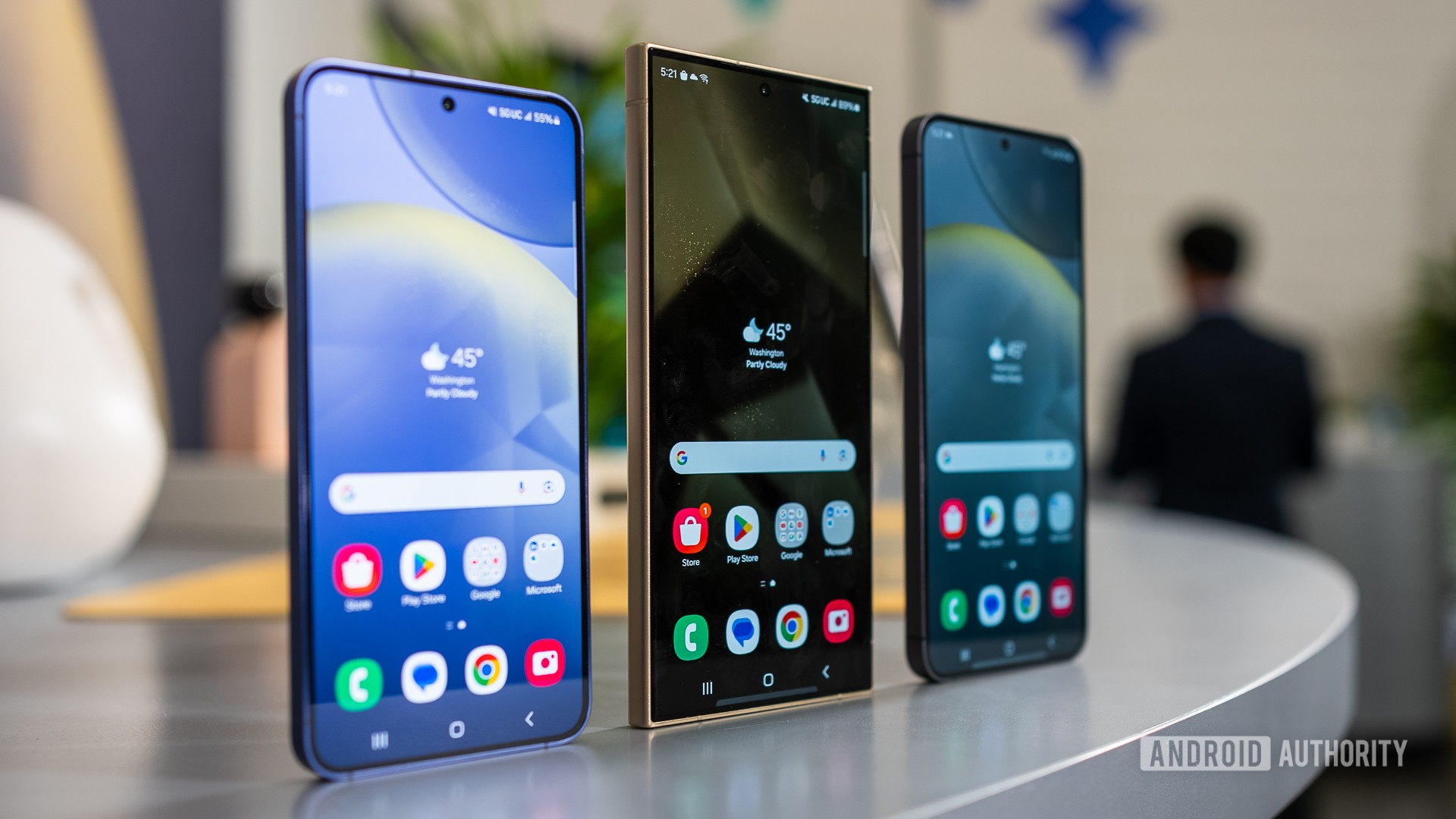Affiliate links on Android Authority may earn us a commission. Learn more.
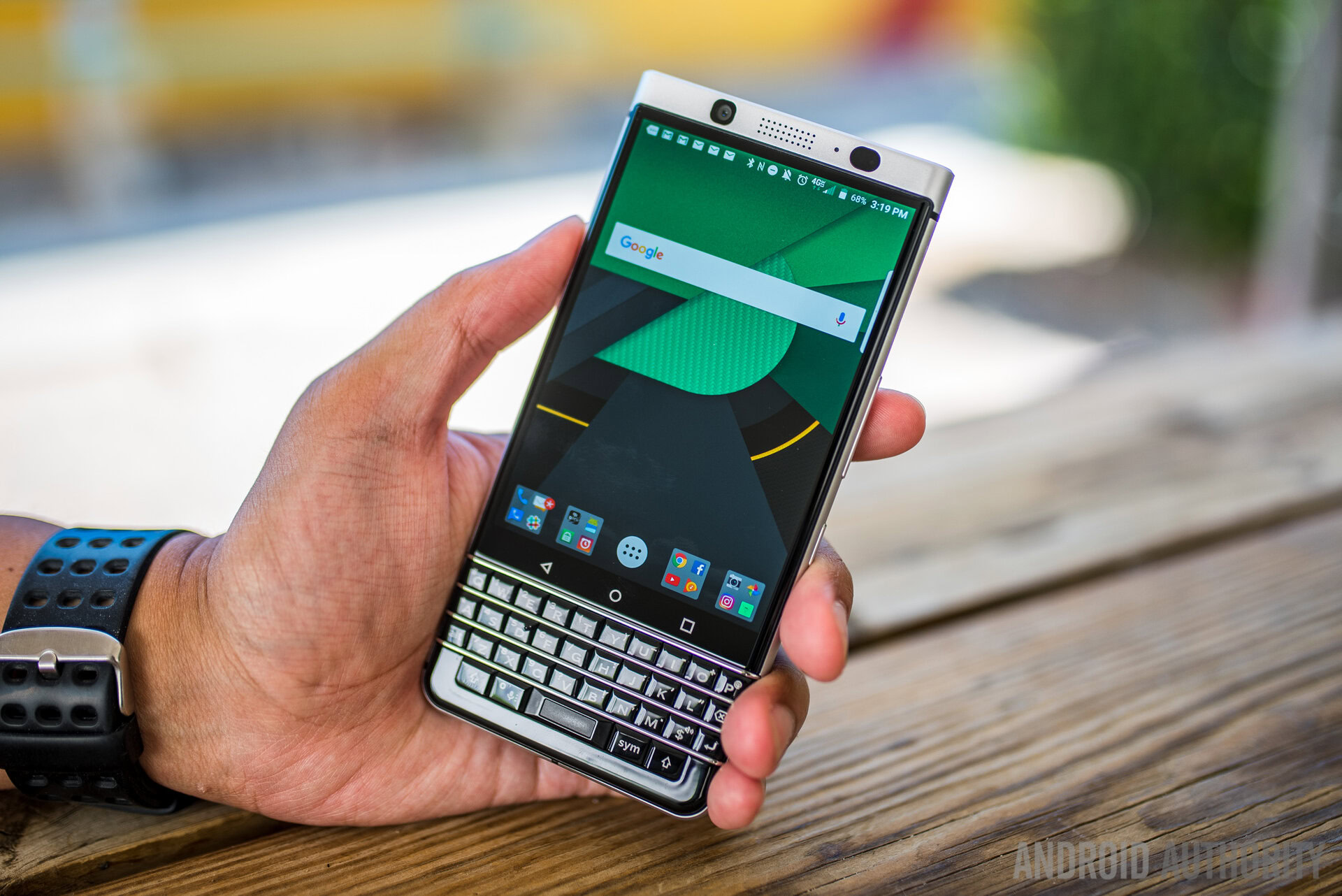
BlackBerry KEYone
What we like
What we don't like
Our scores
BlackBerry KEYone
BlackBerry has taken many different forms over the years, the most recent being an Android smartphone manufacturer. First came the BlackBerry PRIV, then the DTEK50 and DTEK60 later on in 2016. Now in 2017, the company is bringing something completely different to the table.
Originally known as the BlackBerry ‘Mercury’, the KEYone is a new productivity-focused smartphone that aims to be different on both the outside and inside. Sporting a physical keyboard, solid design, and a slew of BlackBerry’s built-in security features, is KEYone right for you?
This is our full BlackBerry KEYone review.
Both Joshua Vergara and I, Jimmy Westenberg, have been testing the BlackBerry KEYone with model number BBB100-1 on build number AAK831 running Android 7.1.1 Nougat, with the April 5, 2017 security update. We've been testing pre-production software, so some of the software and performance issues may be fixed by the time the phone comes to market. We will update this review if anything changes.
Further reading: These are the best Blackberry phones
Design

BlackBerry returns to its roots with a design that doesn’t shy away from its signature keyboard — compared to the more recent and fully-touchscreen DTEK devices and the BlackBerry Priv, the keyboard is the key feature of the KEYone. (I had to get the pun out the way).
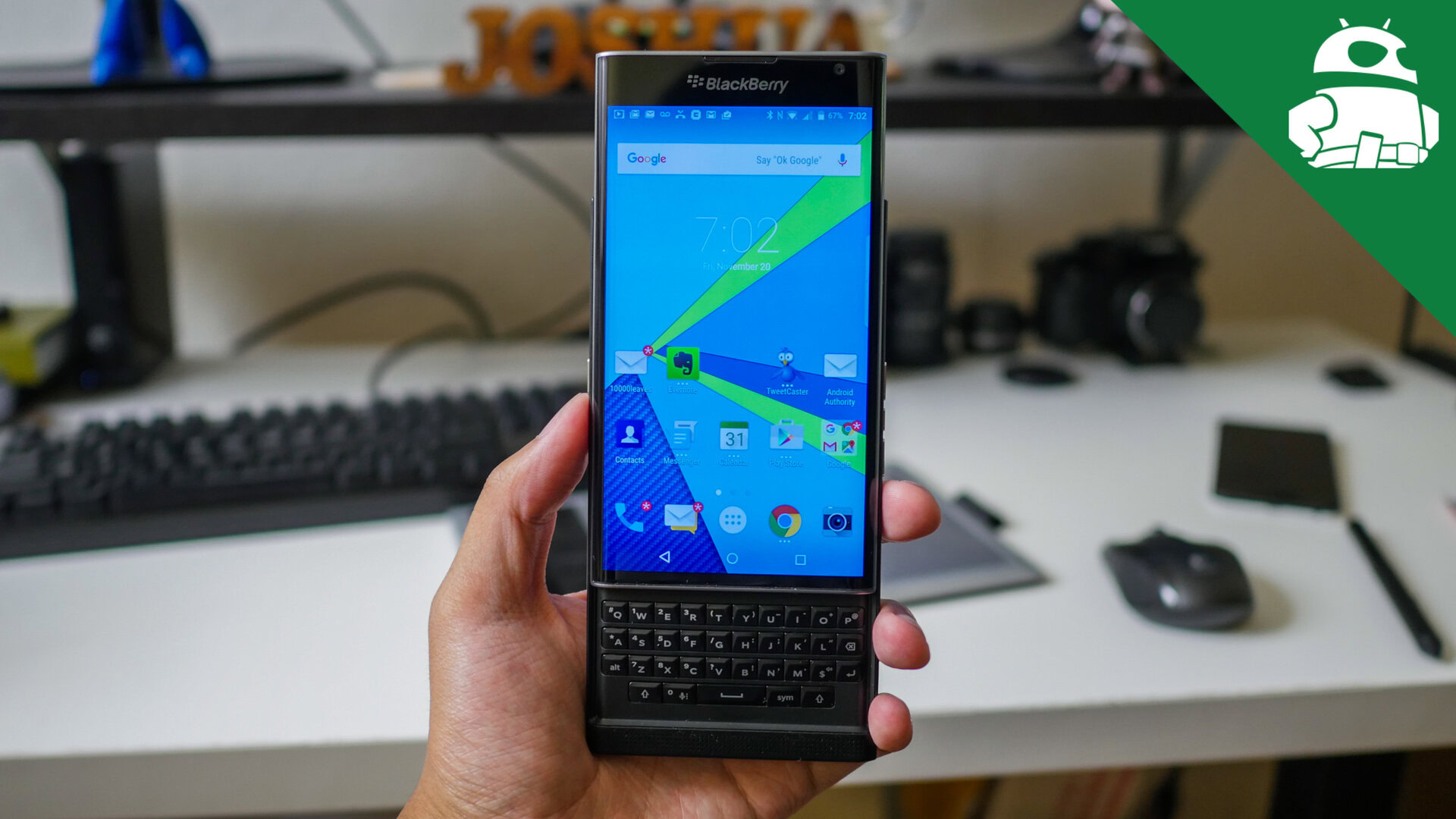
Many of the features of this new BlackBerry forego subtlety, showing proudly their capabilities. The camera packages on the front and back are large and obvious, while the thicker aluminum body all around rocks the side buttons prominently. An array of capacitive keys sit plainly in view between the screen and the keyboard, as the backing of the device helps handling via a rubberized plastic material.
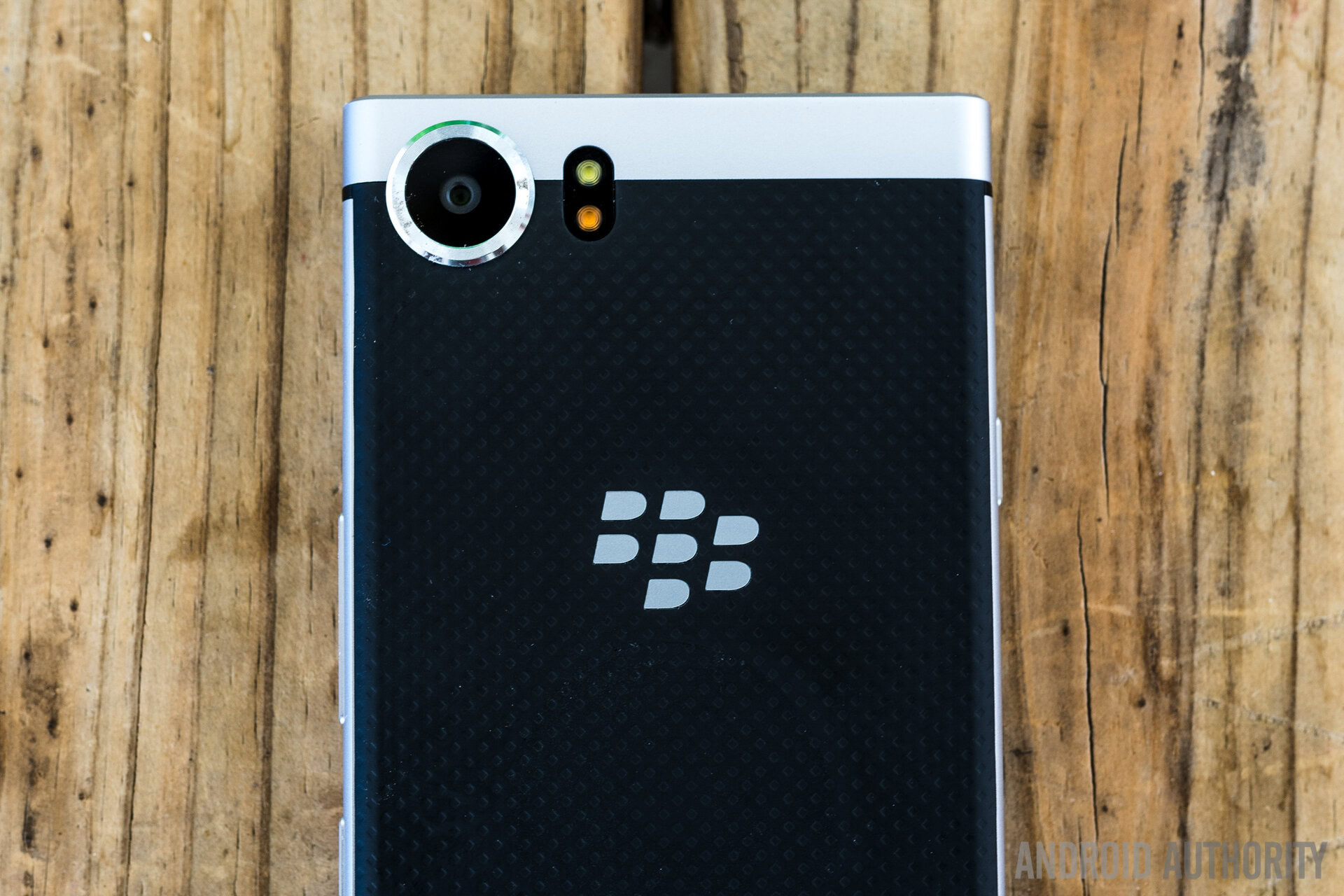
We found ourselves enamored with the unique look and feel of the brick-like KEYone
The end result is a phone that can fit under some particular descriptors — industrial, business-oriented — and, when compared to its totally touchscreen competitors, we found ourselves very enamored with the unique look and feel of the brick-like KEYone.
The rear material and the thicker body make this phone fairly comfortable to handle in one hand, but such usage is definitely not a focus of a phone rocking a physical keyboard. We will talk more extensively about the keyboard later, but just know that typing with one hand using the physical keys is about the only part of the phone that is stuck in the past.

Indeed, the pinky balancing act is basically encouraged and will be the main way of interacting with this latest BlackBerry. However, keyboard gestures help to bridge the gap, as swipes up and down or left and right can help with navigation throughout the UI and within applications. It is really nice to have one’s finger out of the way when reading a web page or scrolling through apps like Instagram.
Capacitive keys are the preferred method of UI navigation for BlackBerry, its middle-path choice between hardware keys and the more common softkeys of current Android Nougat devices. While they are reliable, it took a bit to get used to because the key target doesn’t seem to be squarely on the white icons. Instead, they felt a little bit lower of the designated area, closer to the keyboard.
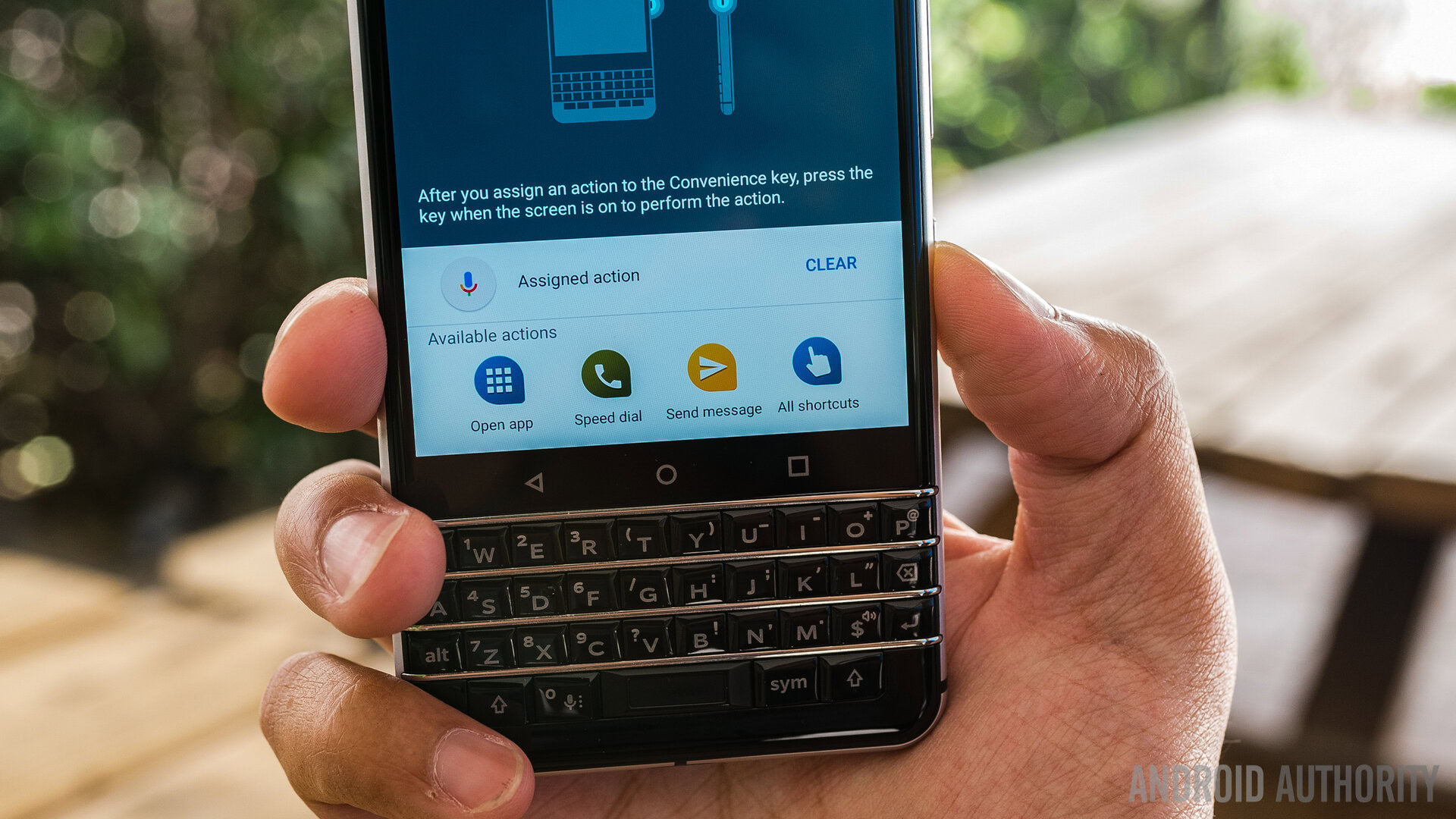
These keys function the same as they would across any typical Android device, and there is no changing their behavior. It would have been nice to program the capacitive keys, gesture keyboard swipes, or even the Convenience Key to the notification dropdown, which is the only tough part of the handling experience.
The Convenience Key is, you know, convenient
TCL’s influence is plainly seen in the inclusion of the Convenience Key, a facet of its more recent Alcatel smartphones. Though keyboard shortcuts may become the main way of opening applications, the Convenience Key allows for access to one app or shortcut from anywhere in the phone, including from standby. Josh had a little trouble trying to figure out what to program to it, since the camera shortcut of pressing power twice is already available. In my case, I found Google Voice Search to be the best way to use the button, which is sitting just below the volume rocker.
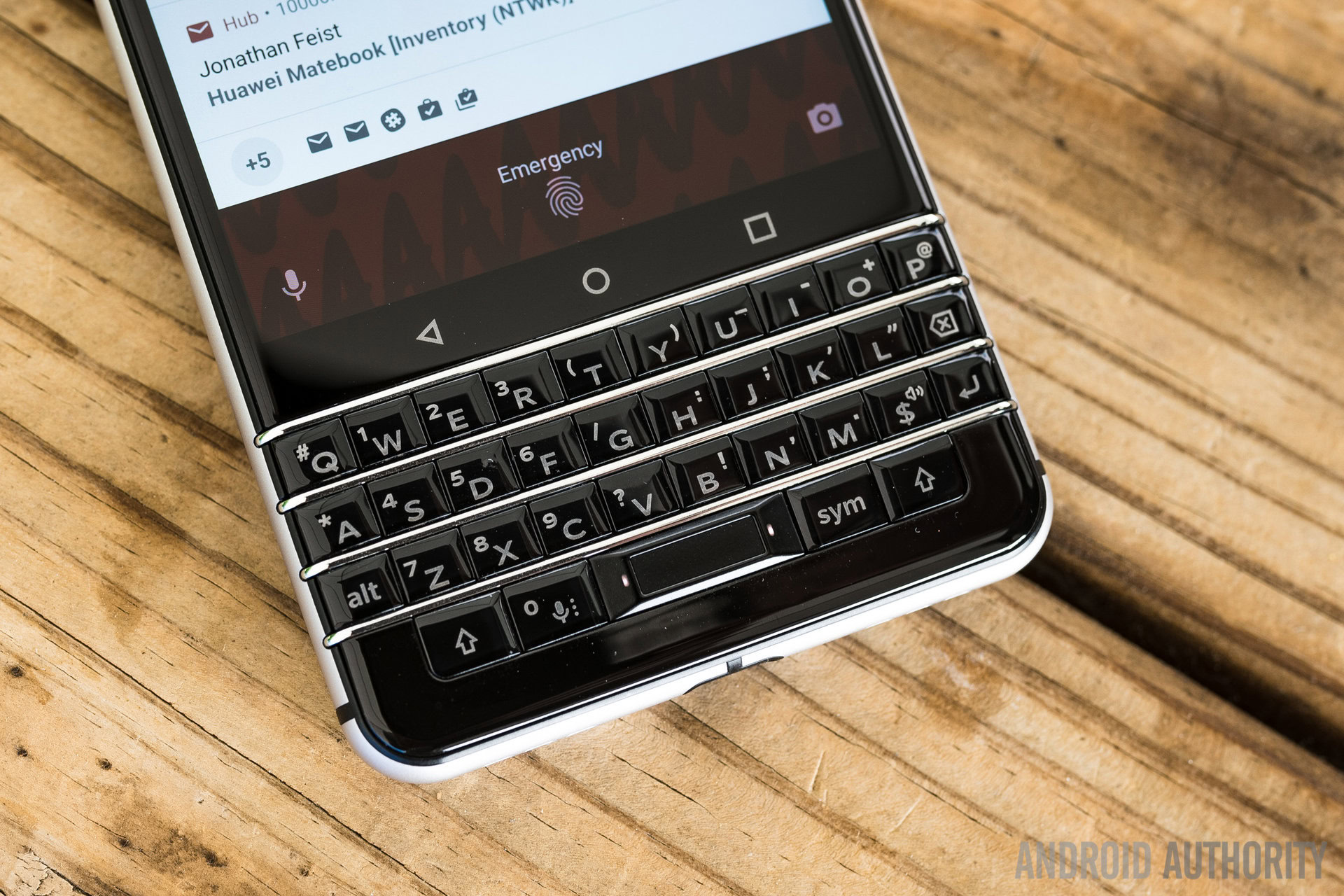
And finally, there is the fingerprint reader embedded in a place that makes an incredible amount of sense for a BlackBerry — the spacebar. A couple of LEDs even pulse to show when it can be used, and unlocking the device is as easy as resting one’s thumb on the sensor, since pressing down the spacebar while in standby doesn’t do anything.
So, despite a slight learning curve and muscle memory reprogramming, the KEYone eventually becomes a very comfortable device to handle on the daily. BlackBerry basically updated their Classic and Bold devices for the current Android era, and to great effect — the KEYone is the only device of its kind in the flagship space, managing to find the best middle ground for every feature splayed on its body. We applaud BlackBerry for putting some real thought into the KEYone without going too far with certain aspects like the phone’s thickness or the screen’s smaller size to make room for the keyboard.
Display
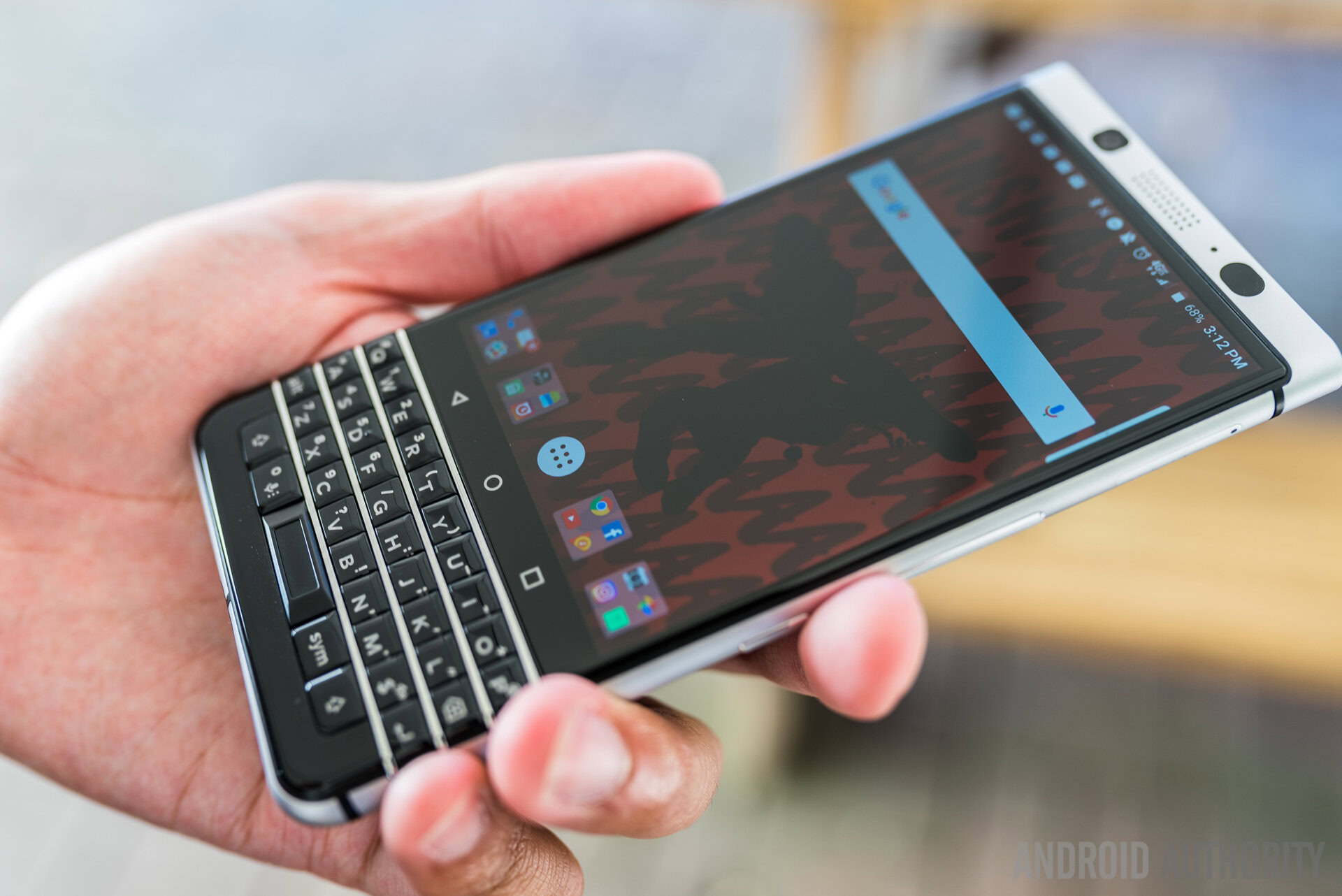
Smartphone displays have been changing in recent months, and not just in terms of resolution. While most of us are probably used to the standard 16:9 aspect ratios found in most smartphones, the LG G6 and Samsung Galaxy S8/Plus sport taller and thinner 18:9 and 18.5:9 aspect ratios, respectively.
The KEYone goes in the other direction, largely due to the physical keyboard taking up space on the front of the phone. It comes with a 4.5-inch IPS LCD display with a 3:2 aspect ratio. That might seem pretty small by today’s standards, but the extra width makes it feel much less cramped than it would if it had a 16:9 display.

And because of that 3:2 aspect ratio, that also means watching 16:9 YouTube videos will cause letterboxing. That’s not a make or break observation by any means, but is still worth pointing out.
The display packs a 1620 x 1080 resolution, with a pixel density of 433 ppi. No, it’s not as pixel-dense as a Quad HD screen, but it’s certainly sharp enough for enjoying YouTube videos and playing games.
Of course, given that this is an LCD display, it’s not going to be as saturated as most AMOLED panels out there, though it’s not particularly lacking in any sense, either. It’s sharp and vibrant, and should be good enough for most users.
BlackBerry did throw in a Screen mode option in the settings menu if you need to make the display cooler or warmer. That’s usually an overlooked feature, but really convenient if you’re particular about your smartphone’s display.
The KEYone's Ambient Display and double tap to wake features really come in handy
The KEYone also comes with an Ambient Display feature, similar to the one found on Nexus and Pixel devices. It only shows the time, date, and your notifications when they show up, and is otherwise off at all times. You can’t raise the phone to bring back the Ambient Display, nor can you press a button on the keyboard to wake it. We don’t want to call this an underbaked feature, solely because it’s simple. Rather, it’s just a set-it-and-forget-it feature that you turn on once in the settings menu.
BlackBerry did, however, include a double tap to wake feature for the KEYone’s display, which is really handy if you need to wake the device’s display when it’s sitting on a desk or table.
Performance
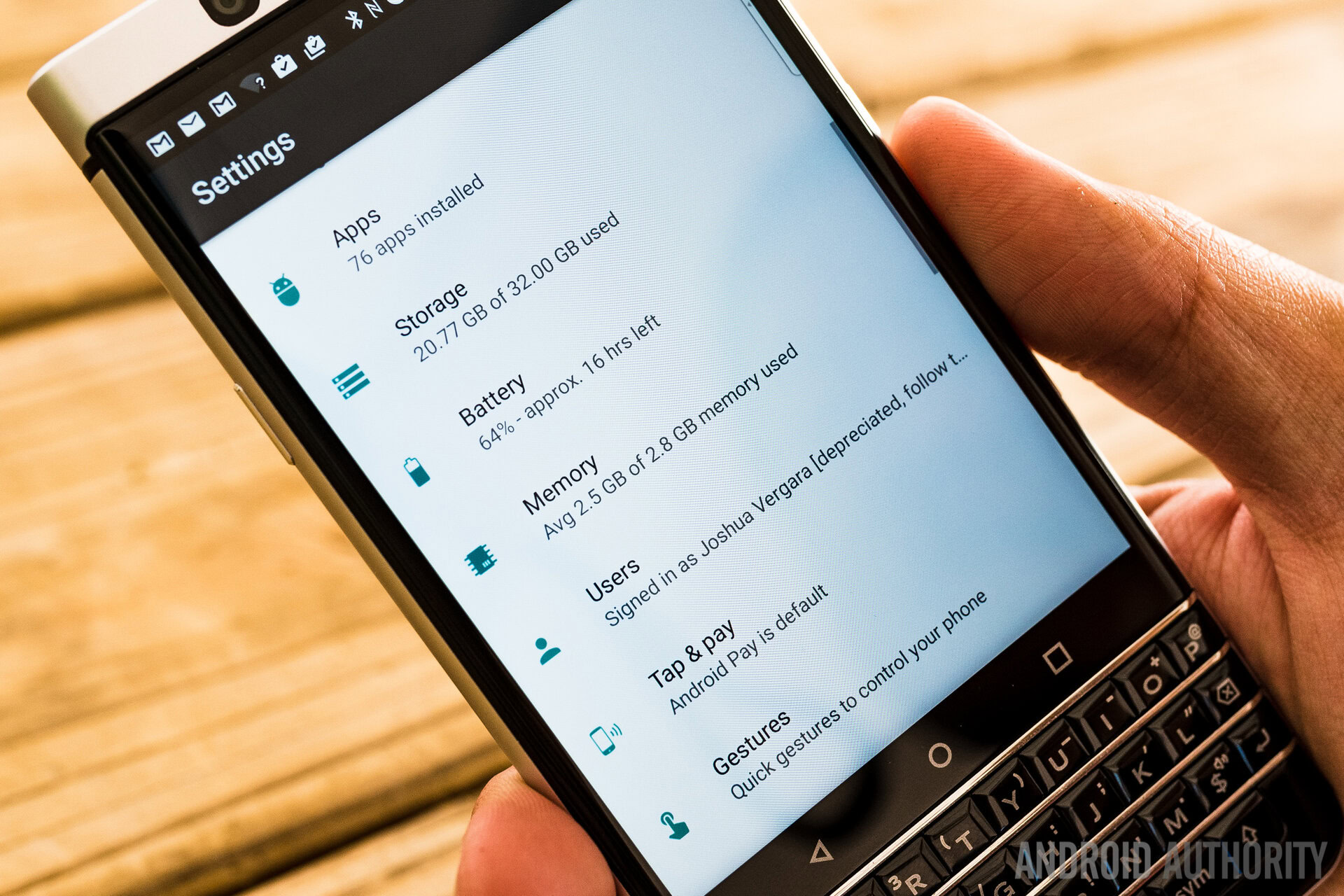
It’s important to remember what kind of user most benefits from this new BlackBerry
The spec sheet makes this phone seem far from the flagships it might be compared to — the Snapdragon 625, Adreno 506, and 3 GB of RAM are all at least one step back from basically any high profile and high-end phone we’ve seen recently. It should come as no surprise, then, that this phone won’t be the biggest powerhouse. That doesn’t mean that the KEYone is incapable of getting things done — it’s important to remember what kind of user most benefits from this new BlackBerry.
Loading graphics-intensive apps was the main issue, with higher-end games and emulators hanging for a bit before actually launching after a tap. Once in the game, however, the experience was smooth without much slowdown. However, on plenty of occasions both Josh and myself experienced slowdowns when opening up other applications when these games continued running or were pushed to the background (read: in the RAM).
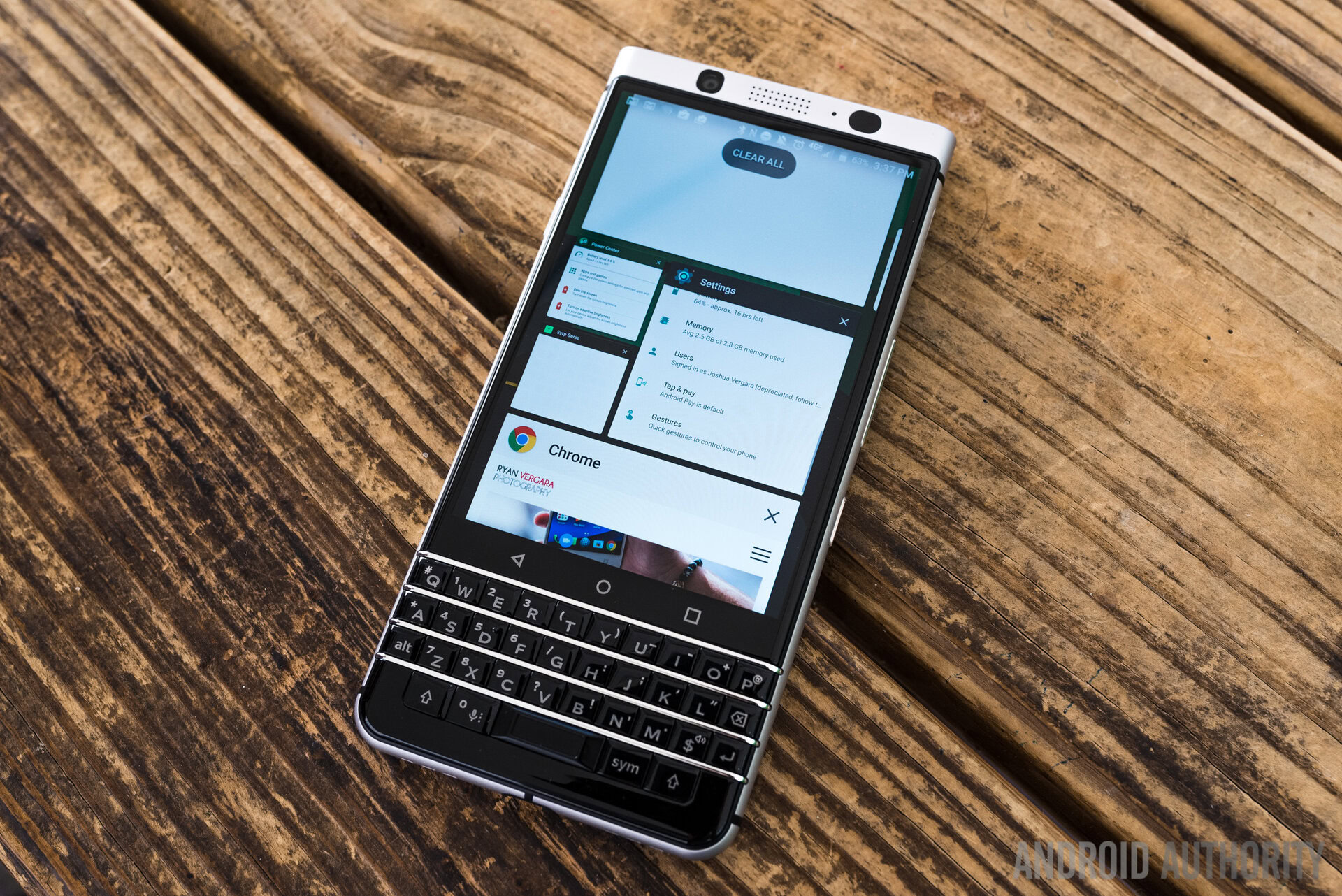
So, the hardcore media consumer or gamer won’t have the best time with the KEYone. And while the combination of lower-end specifications are to blame for this, we feel that the 3 GB of RAM is the most noticeable issue. The settings screen will pretty much always say that the 2.8 GB of usable RAM is maybe 2.3 or 2.5 GB full, so it was easy to point at that as an issue.
As such, Josh found himself doing what he called ‘Clear All Maintenance,’ a practice in which he went to the recent apps screen and hit Clear All both randomly and before loading certain apps like emulators. This turned into a subconscious habit — one that Josh felt improved the general daily usage — but one situation constantly frustrated him: Android Auto. About half of the time, the plugged in KEYone would hang for a noticeable amount of time before loading the Android Auto interface in his Volkswagen GTI infotainment system. It never crashed once loaded, but the pause was hard to brush off.
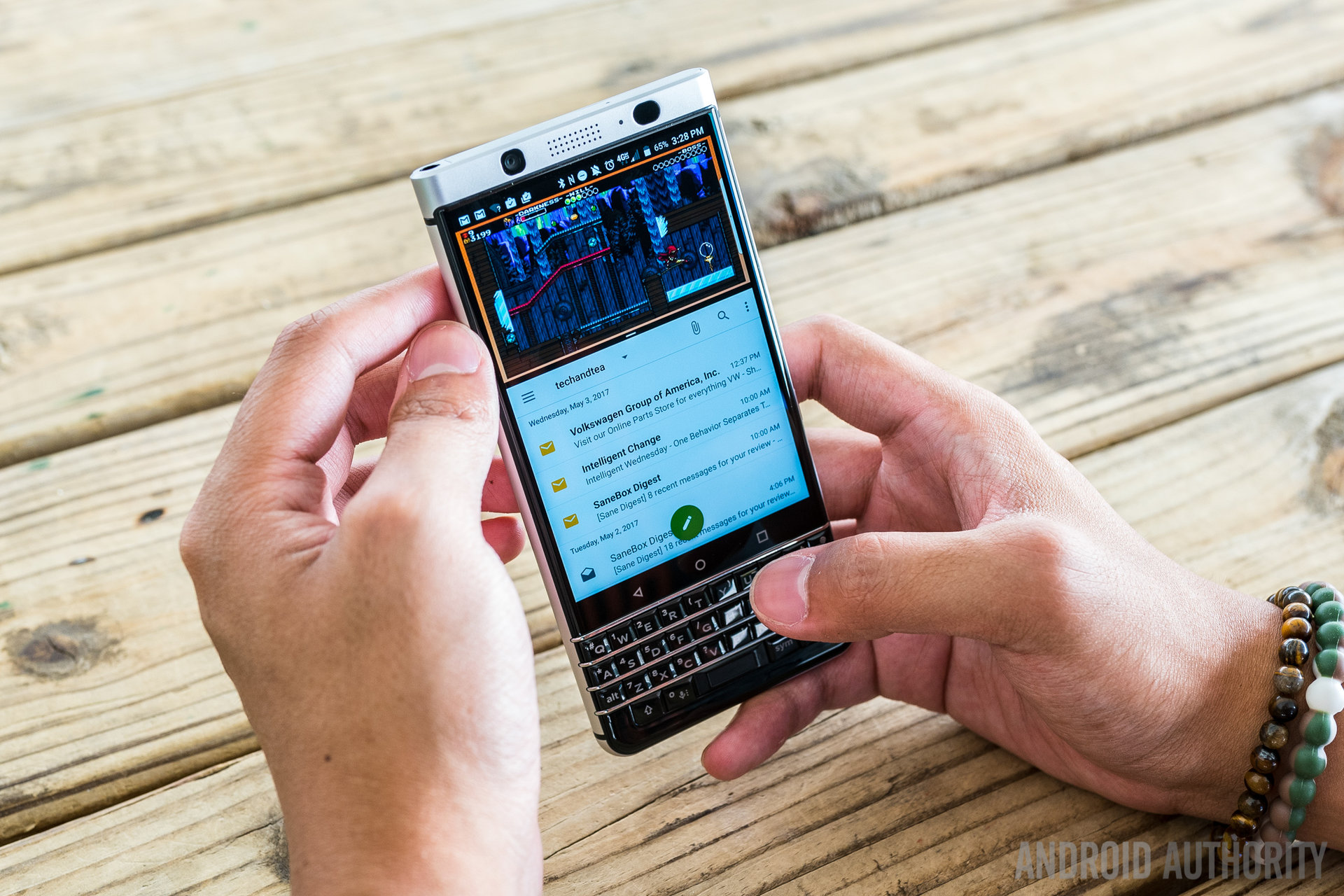
Just don’t expect this phone to be able to do everything all at once, all the time
While it’s easy to view the performance as the worst part, we have to remind users that the KEYone is geared toward productivity and enterprise. And in that specific scope, the phone performs swimmingly. Workflows will differ between users, but we didn’t feel slowed down in any productivity-centric situation. We were messaging colleagues on Slack while jumping between the Hub for e-mails, sliding over the Productivity Tab to view upcoming tasks or calendar entries, and popping back to the home screen to quickly load any application via keyboard shortcuts — lather, rinse, repeat. Even dual window multitasking is possible, as Josh played YouTube while responding to emails on multiple occasions. Just don’t expect this phone to be able to do everything all at once, all the time.
Hardware
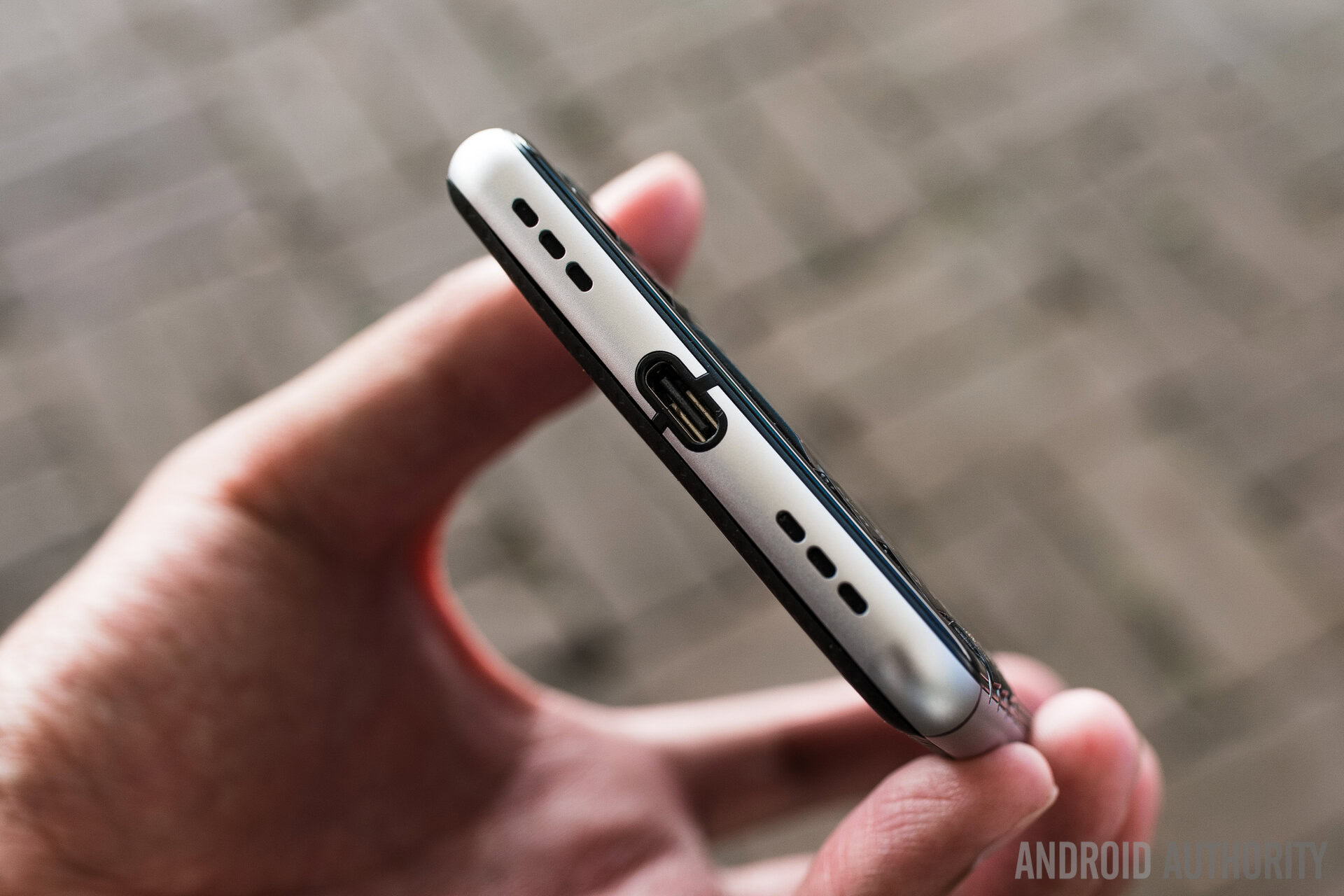
32 GB is the only built-in storage option available here, but if that isn’t enough for you, expandable storage via microSD is possible for up to an additional 2 TB. There’s no second SIM card slot, though.
Additional connectivity features include Bluetooth 4.2 (LE), NFC, and even an FM radio.
On the bottom of the device there are two speaker grills, though only the right one is a speaker. Speaker quality is pretty poor for the most part; it doesn’t get very loud when listening to music or podcasts, though it should be good enough to use during speakerphone calls in most cases.
Normally when we talk about single bottom-firing speakers, we also gripe about how easy they are to cover up when playing games. That’s actually not the case here, as sound tends to bleed through the physical keyboard on the front of the device. So even if you do cover up the speaker grill by accident, it’s not the end of the world.
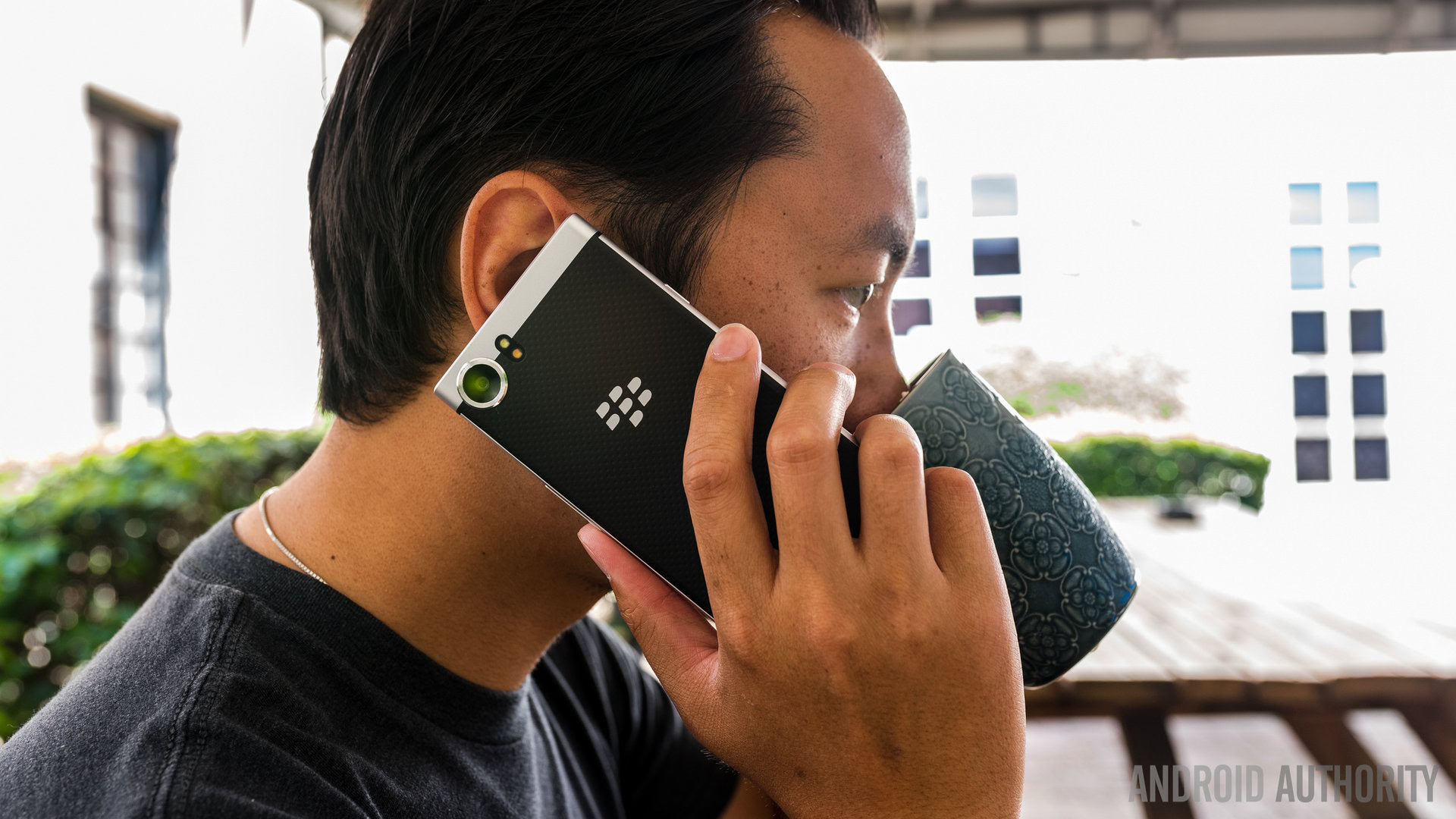
One area in which the KEYone excels is in battery life, and that’s thanks to the non-removable 3,505 mAh unit. We’ve both been able to achieve about 4.5 hours of screen-on time on a regular basis, with average use. But that’s just for everyday use. In some cases, both Josh and I have achieved 6+ hours of screen-on time, and that includes browsing through social media and watching the occasional YouTube video.
The KEYone's battery just won't quit
When you do run low on battery, BlackBerry says you’ll be able to achieve a 50 percent charge in just 36 minutes, and we can absolutely vouch for that claim. When you plug the device in, you’re presented with two different charging options: Charge Only mode, or Boost mode. Charge Only mode is just your standard way of charging the phone with Quick Charge 3.0. Boost mode, however, puts the phone into a sort of power saving mode and shuts down background processes to maximize the charging efficiency of the device. This isn’t really something you’re going to need to use every time you plug in, but it should come in handy if you only have a few minutes to charge up.
And in case you were wondering, the KEYone doesn’t support any form of wireless charging. Womp womp.
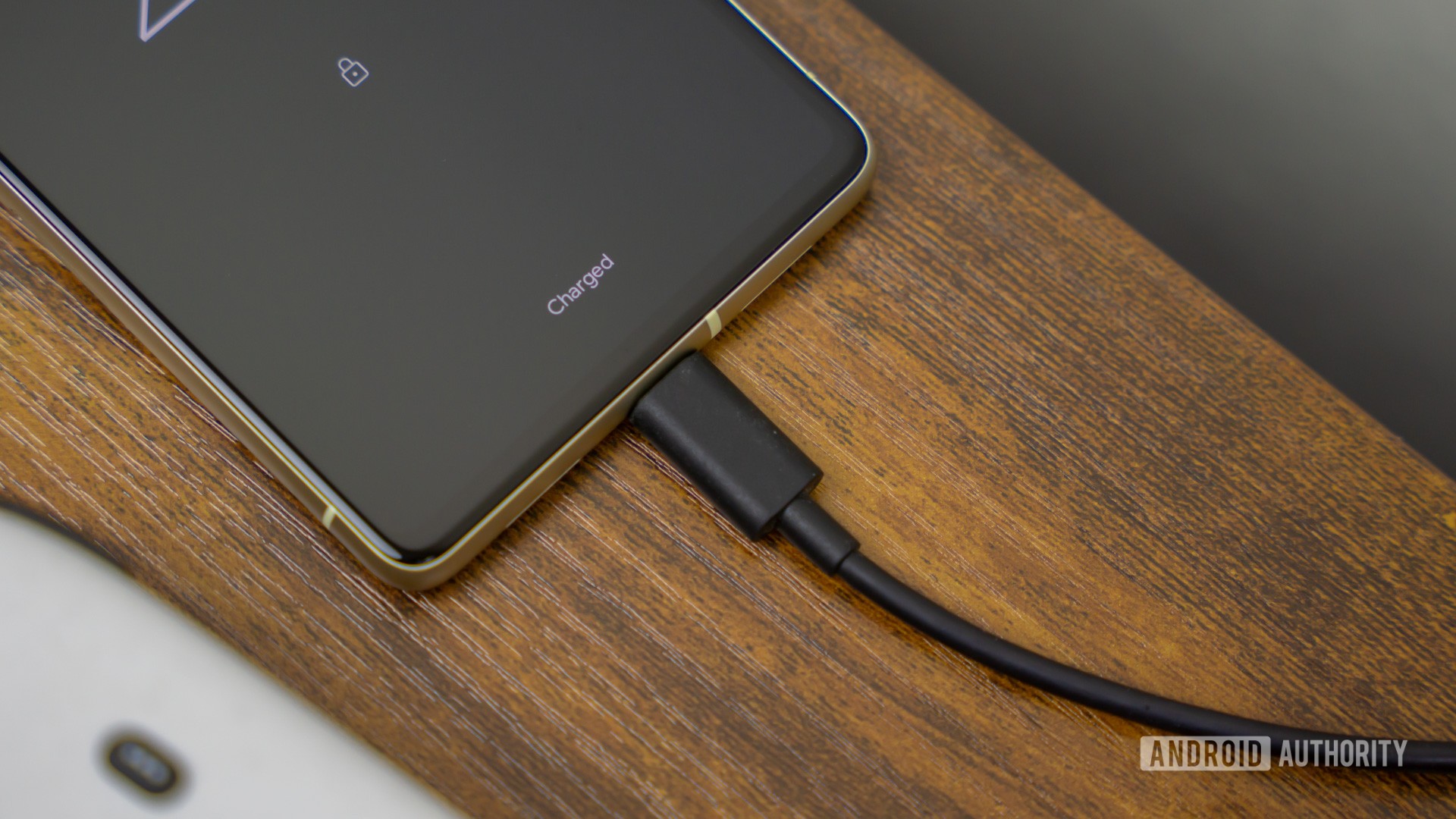
Physical keyboard
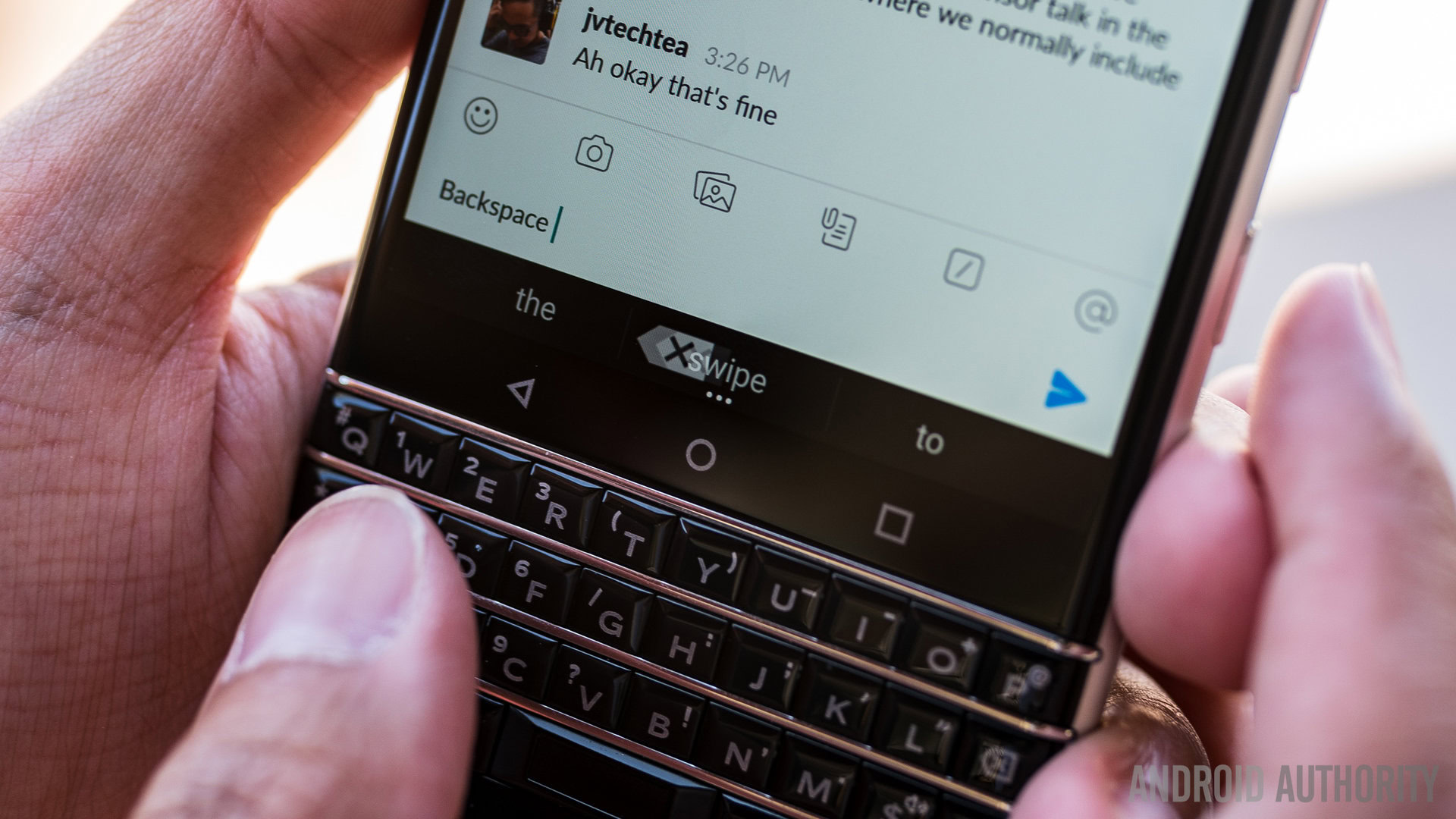
Some might view a physical keyboard as a frivolous addition to a touchscreen world, but the key feature (the last one, I swear) of this BlackBerry easily gave us some of our favorite experiences in Android this year.
BlackBerry veterans (especially users of the old Bold phones and the more recent BlackBerry Classic) will feel at home with this form factor that is the only one of its kind in today’s Android landscape. Others, however, may need a little bit of time to get used to the KEYone’s learning curve.
The physical keyboard takes a while to get used to
Pressing down with force on the different keys for typing took a bit of getting used to for our team members who are used to swipes and light touch typing on virtual keyboards. Josh, a resident Fleksy and NINtype typist, felt this as the slower typing speed on the KEYone somewhat deflated his enthusiasm. But after some time, muscle memory and repetition led to more comfort and speed, even if one handed typing was done less. It seems that the general workflow for the KEYone hinges on typing with two hands and then resorting to voice input when necessary. Even the currency key that has a speaker icon on it only has one function aside from designating monetary denominations — it simply toggles the loudspeaker during calls.
“Oh, let me look that up real quick.”
*click, then tap tap tap*
“Yelp says that this restaurant has 4 stars. Great, so I’ll see you there!”
This example also shows how the physical keyboard keeps the screen from getting cluttered. Without a virtual keyboard to take up close to half of the available screen real estate, the important bits are unhindered. Think YouTube and then Facebook Messenger in multiwindow mode, where your keyboard typing is simply out of the way.
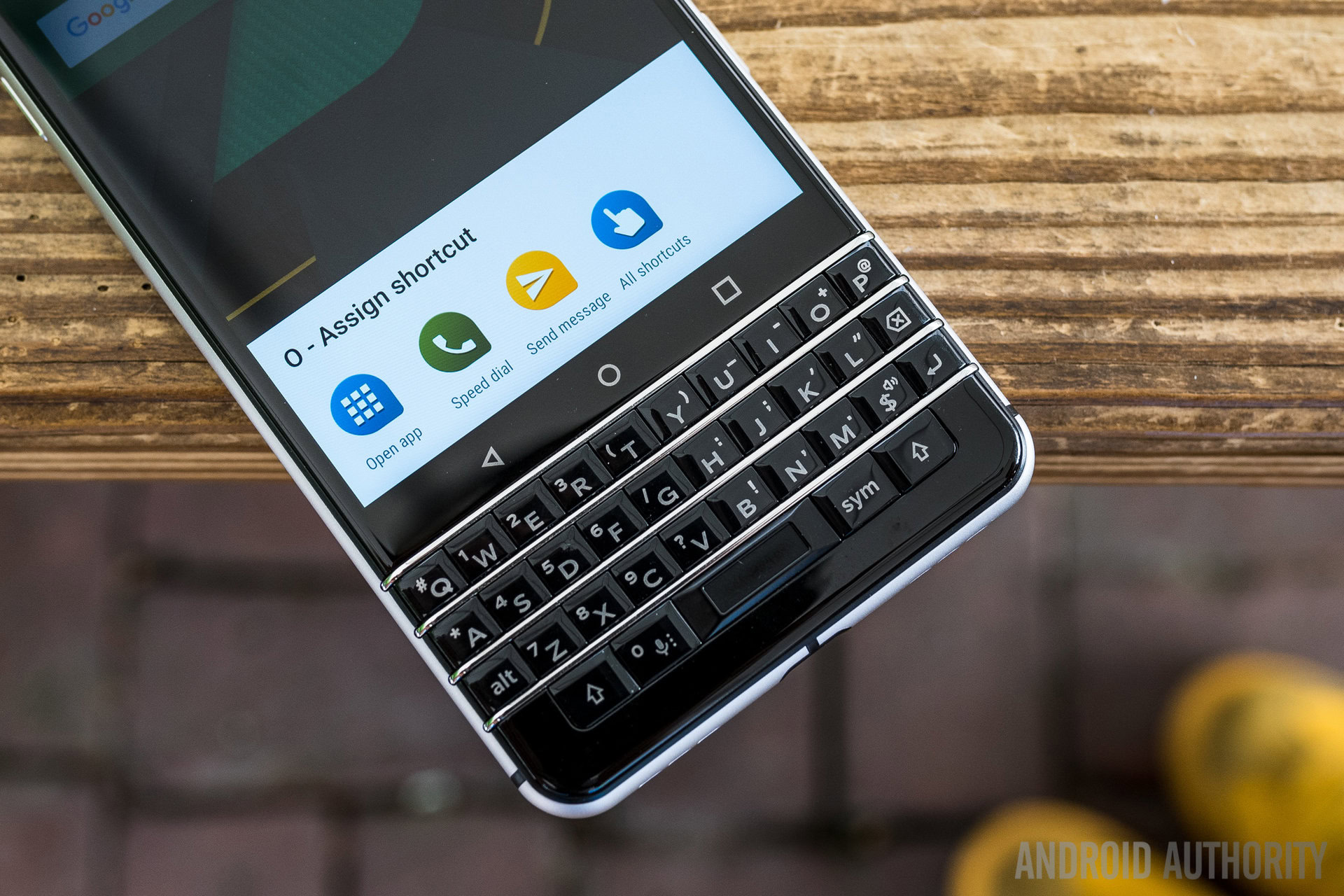
I bet that many users are looking forward to setting up their keyboard shortcuts — be forewarned, however, that the shortcuts require the BlackBerry Launcher to be in use. The home screens monitor for short or long presses in order to trigger any of the programmed apps or shortcuts, which means tapping home and then the desired shortcut key whenever necessary. Any third party launcher will break this functionality. While that is a bummer, we explain later on how we love the BlackBerry software and find that we didn’t really feel the need to change launchers. In other launchers, however, any presses on the keyboard will instantly trigger Device Search, which easily brings up shortcuts to the same apps and shortcuts.
We felt it would be nice for us to share our top 5 most used keyboard shortcuts, so many you can get an idea of what you would choose:
Josh
- I for Instagram
- K for KeePass
- V for Voice
- Y for YouTube
- S for SlingTV
Jimmy
- A for Allo
- C for Camera
- G for Google
- L for LastPass
- S for Slack
The number of shortcuts you can program into the physical keyboard can get overwhelming
With some imagination, there are many possibilities provided by the KEYone’s physical keyboard. As you may have surmised from earlier statements about the BlackBerry Launcher and shortcuts, the only thing limiting this keyboard is the company’s own oversight. It would be nice for a swipe down on the keyboard to reveal the notification dropdown, for example. And if long presses on the keys could still do shortcuts no matter what launcher is in use, that would please many users who prefer their third party launchers. But there is definitely a ton to fun to be had with a physical keyboard, so many Josh wasn’t so crazy to be such an advocate for it in past Android Authority Podcast episodes.
By far, the most enjoyable part about the keyboard is every moment that either Josh or I found out a new function. Josh found a rather deep setting that could convert one of the shift buttons into a sort of ‘Ctrl’ key, allowing for copy and paste shortcuts like ‘Control+A’ for selecting all characters and ‘Control+V’ for pasting from the clipboard. For those who use password managers, this is an incredibly useful tool.
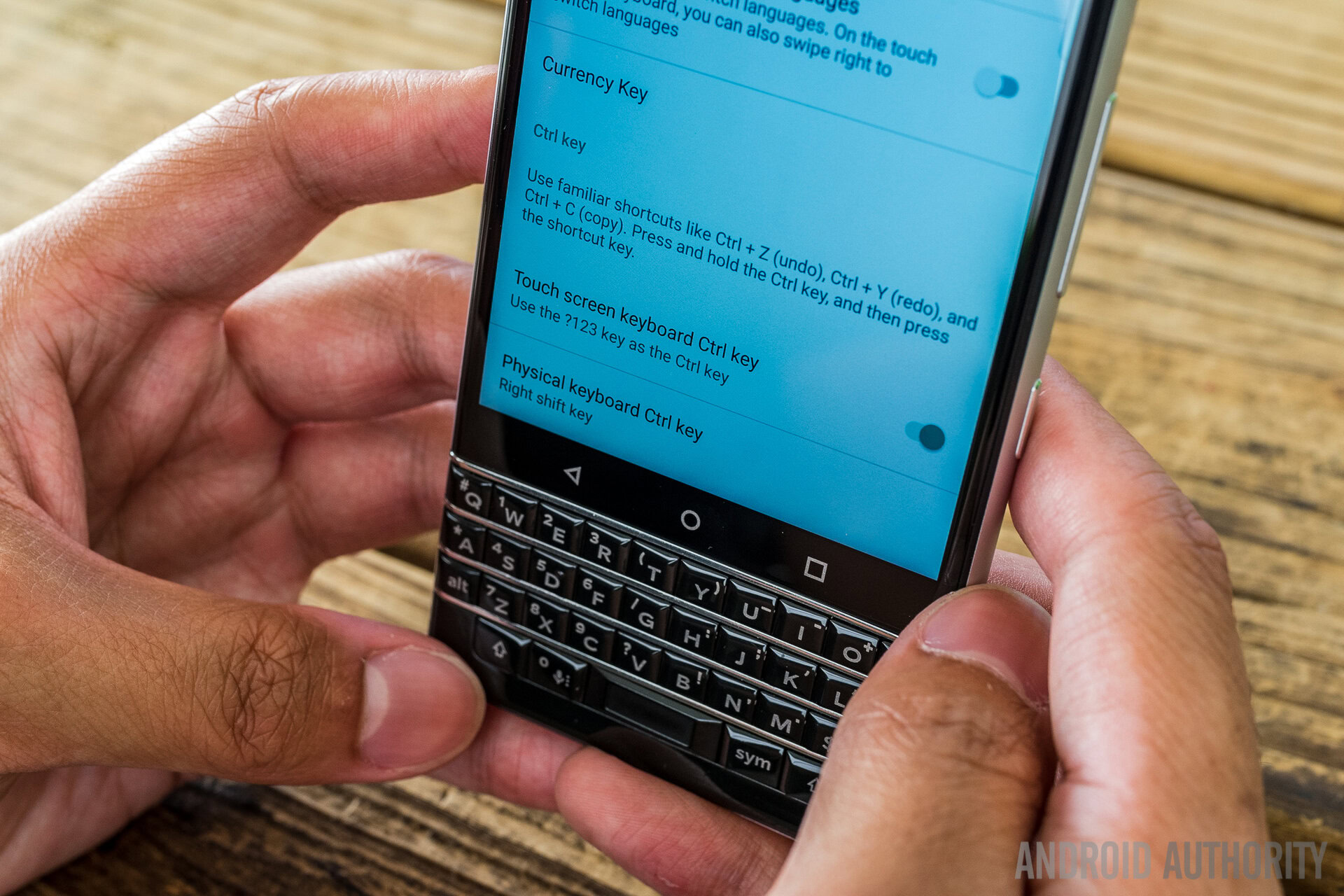
Another use for the physical keyboard that Josh has used extensively deals with gaming – with a bevy of buttons at his disposal, Josh went a little old-school and started playing some of his favorite old games via emulators, programming the keys for controller input. The KEYone, then, was like a makeshift Game Boy Advance or a PSP with many of the on-screen controls shifted over to the keyboard.
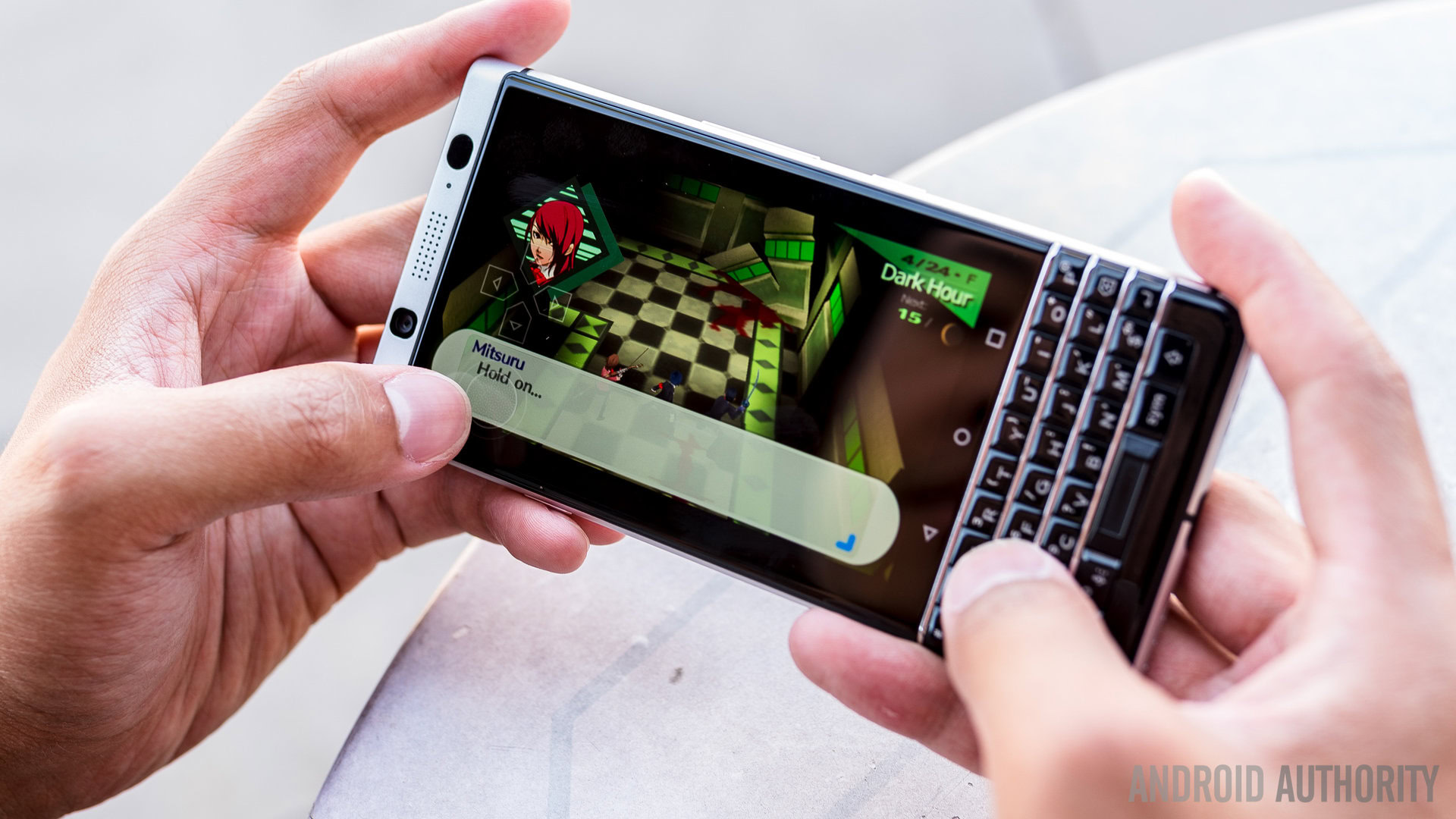
I, on the other hand, have had daily discoveries. My latest pleasant surprise was in the camera, where the spacebar can be used as the shutter button and swiping up and down it easily changes the exposure compensation. That keeps fingers off the screen and the whole screen/viewfinder in plain sight.
Camera
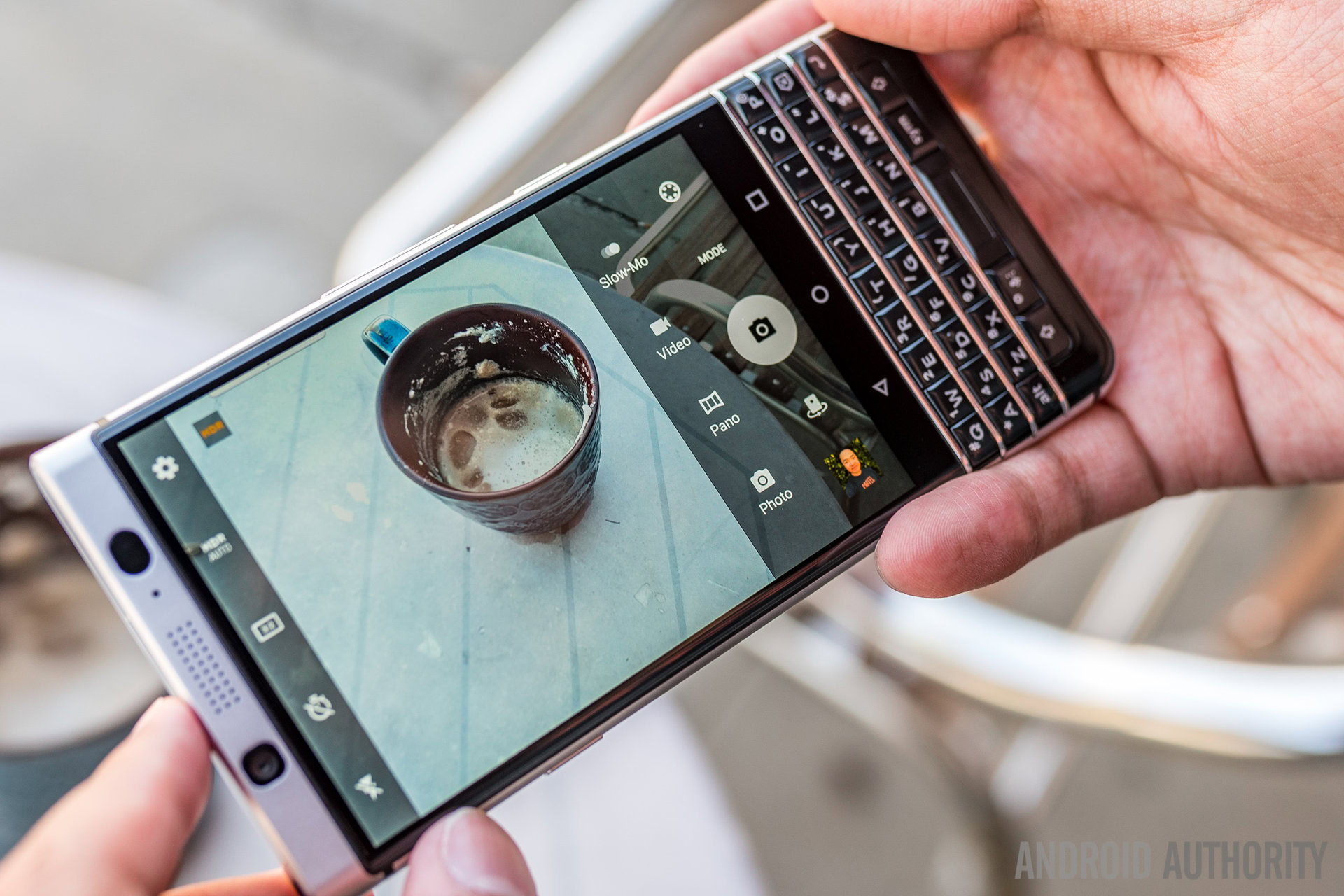
BlackBerry takes cues from some reputable smartphone cameras to make one that is on par with typical needs. While the KEYone is not a particularly amazing shooter, it keeps from being below average. 12MP at 1.55µ sizes help this f/2.0 aperture lens capture pictures that are still pleasing enough to the eye despite lacking mainly in sharpness. Details in pretty much any photo are soft and are not as crisp as other shooters in this year’s competition.
Video modes include 1080p at 60 fps or 4K video recording. A Pro mode is available but it does not provide as much freedom as the Galaxy S8 or the LG G6. And as we mentioned before, the keyboard provides a few different convenient gestures.
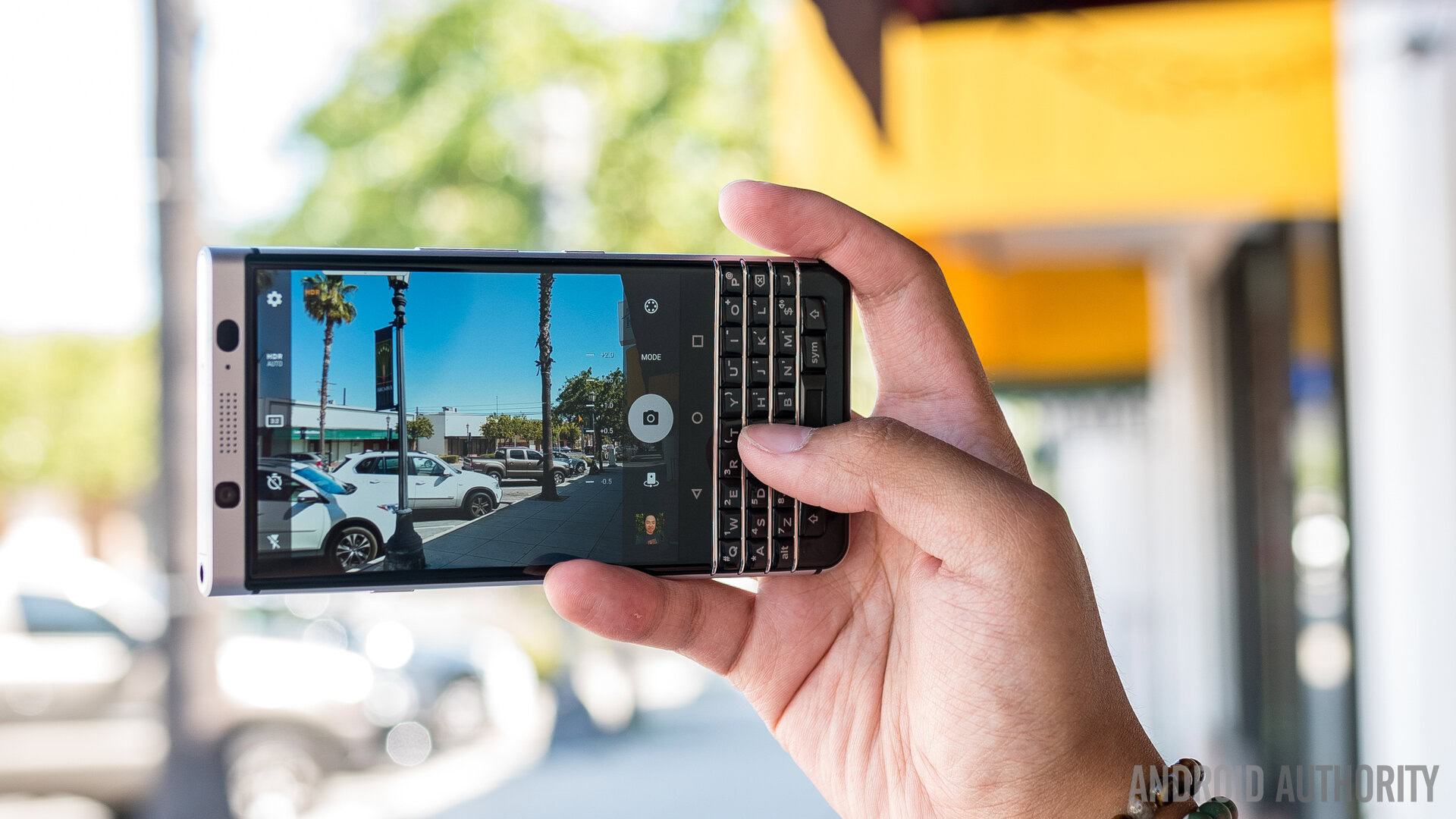
Where we do enjoy the camera experience is in self portraits. The front facing camera gets a nice bump up to 8MP, which is actually above the norm in the flagship space. As a result, selfies in good lighting come out looking pretty nice, with an expected sharpness bump compared to the common 5MP shooters.
We reiterate the focus of this phone — getting things done — and the camera is another example of that mentality. Even BlackBerry know this — while the company touts the rear camera for its capabilities (on paper), it clearly makes the point of mentioning video conference calls using the front facing 8MP camera.
In good lighting conditions, it isn’t hard to get a good photo for sharing on social media or otherwise — in low light, however, the camera suffers from a lack of optical image stabilization, meaning slower shutter speeds will cause motion blur and hurt the overall picture. We don’t think that the camera is terrible in any particular regard, it just doesn’t offer as much as pretty much any other high-end device that we’ve seen in 2017.
BlackBerry KEYone camera samples
Software
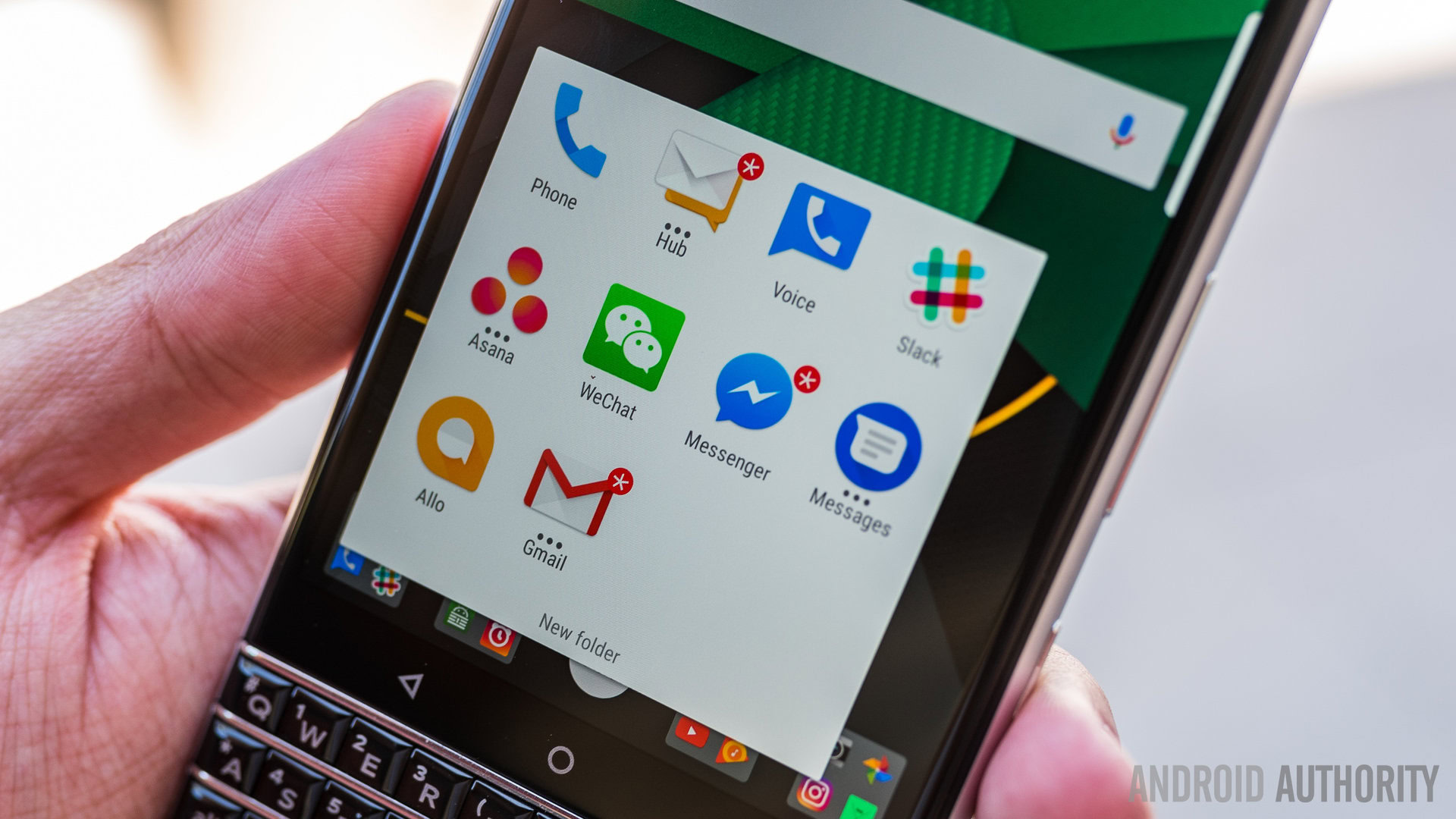
One of the biggest reasons to buy a BlackBerry phone is for the software. Not only is the software on the KEYone refined and a joy to use, the extra security benefits will help keep your information safe and secure. Before we get into that, though, let’s talk about the basics.
The KEYone is running Android 7.1.1 Nougat, which comes with a fair amount of BlackBerry’s own customizations on top. You wouldn’t necessarily know it though, as BlackBerry doesn’t really stray too far from what we know as “vanilla” Android.
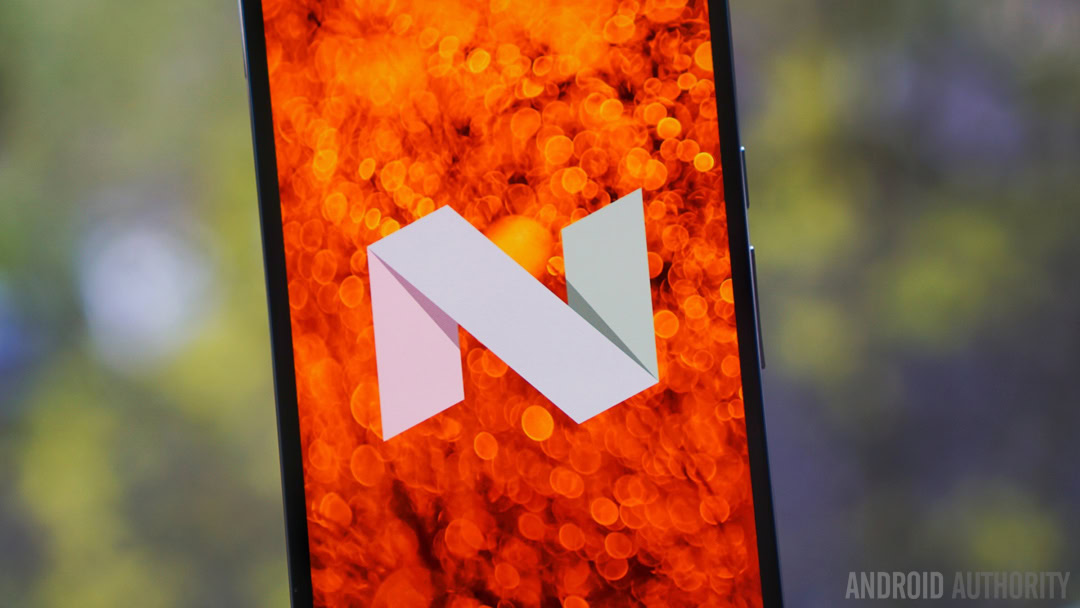
The stock BlackBerry launcher comes with a ton of useful features that we have grown very fond of. The most convenient feature present are pop-up widgets, which are denoted on each application icon with three small white dots. Swiping up or down on an app icon will bring up your widget of choice, which is a super easy way to access information without opening the app. We’d like to give credit to BlackBerry for implementing this feature in their launcher, but it’s a shameless ripoff of Action Launcher 3’s Shutters. At any rate, they work super well, and we’re happy the feature is there.
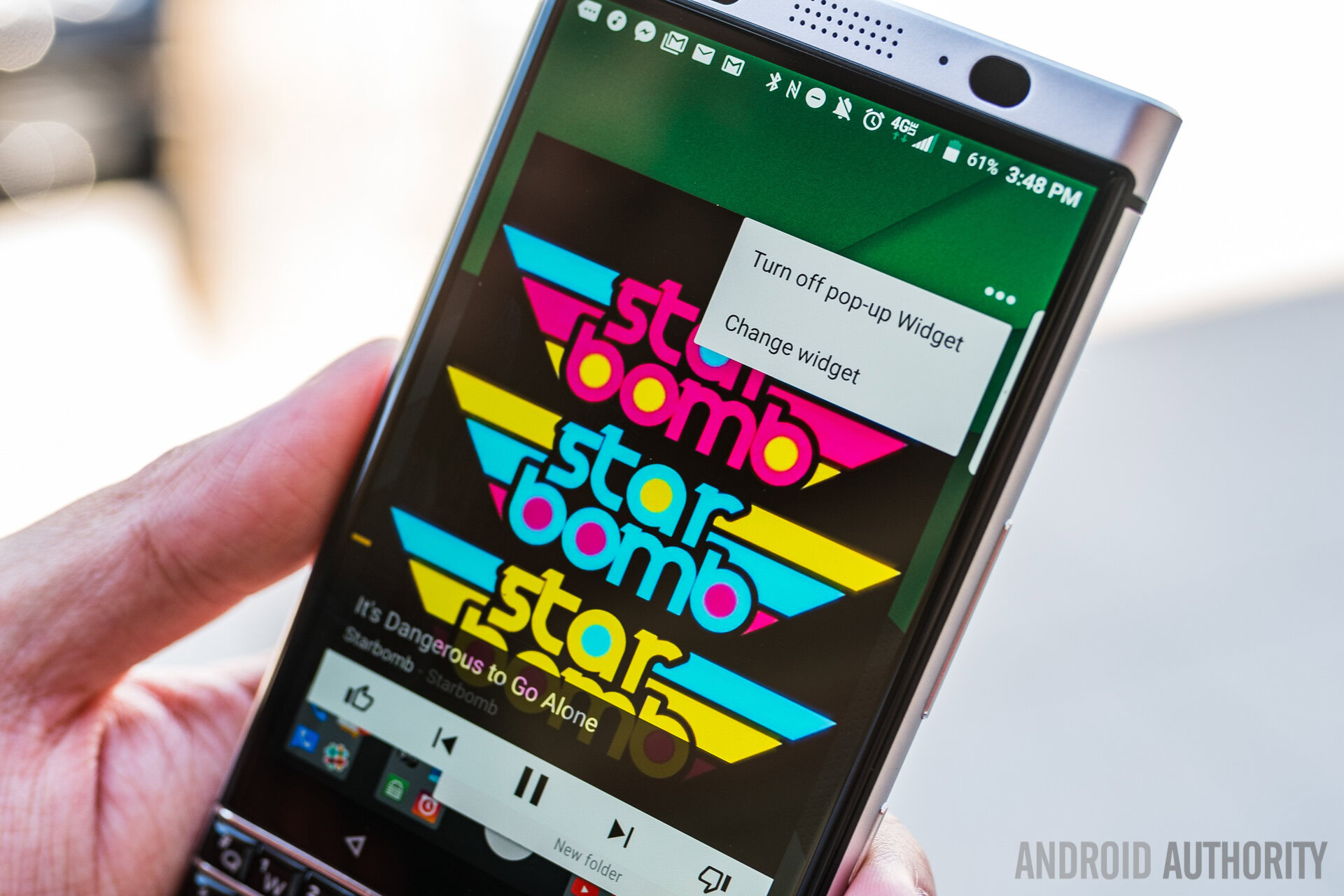
Opening up the app drawer reveals a list of all your applications in alphabetical order, with two rows of recently-used apps on the top. Above that, you’ll find three tabs, which allow you to swipe between your apps, widgets, and shortcuts. We know some users are big fans of this app drawer layout, but on the KEYone, things are cluttered enough as is due to the shorter, wider display. We wish BlackBerry would do away with this tabbed layout and instead embrace Google’s method of accessing apps and shortcuts – by long-pressing on the home screen.
Aside from the awkwardly designed app drawer, most of the other menus on the KEYone are pretty stock. The notification shade, quick settings menu, and even the settings menu (for the most part) are just like you’d find on a Nexus device. Even the recent apps menu can be changed from the default Masonry view to the standard Rolodex view you usually see in Android phones.
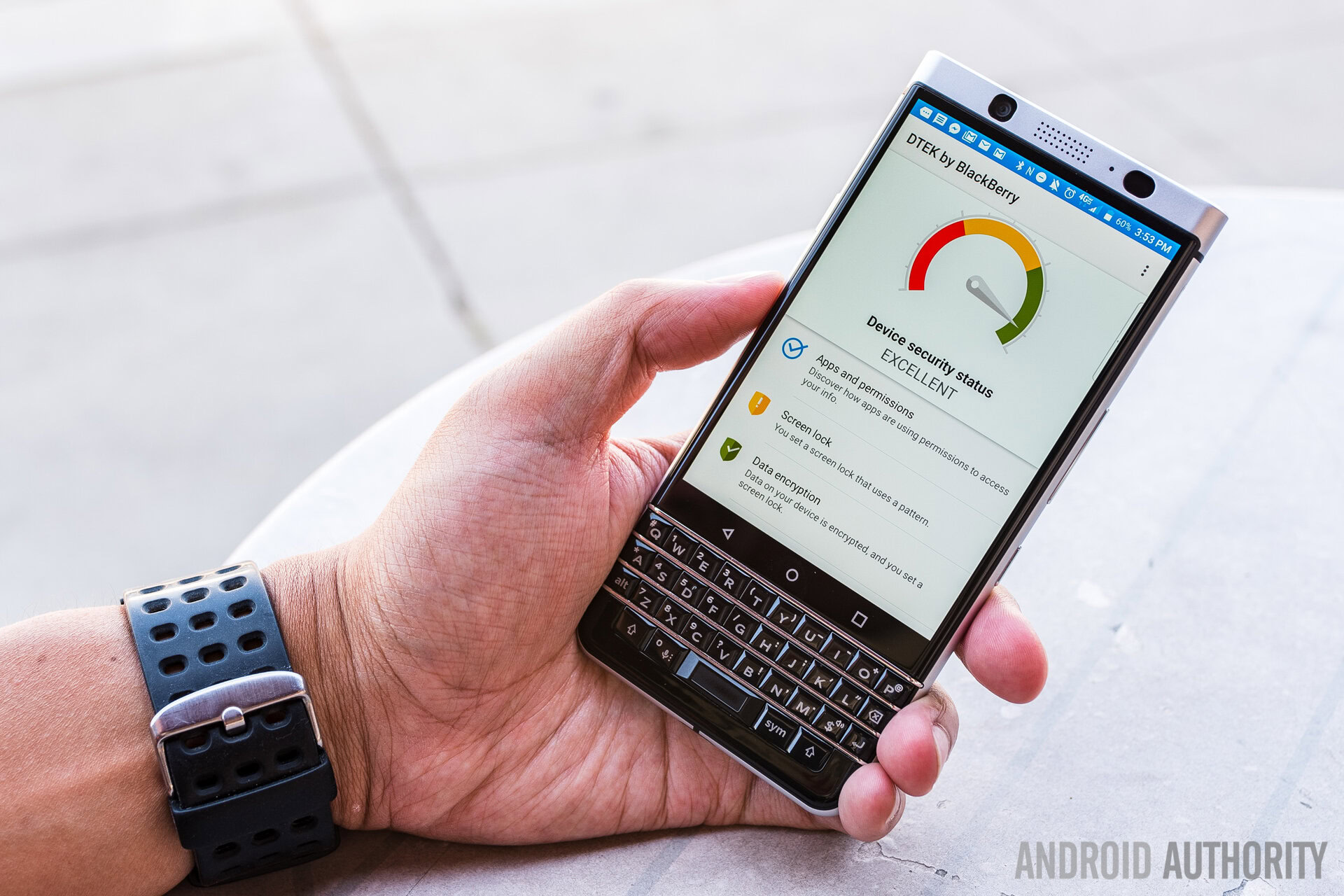
DTEK is a must-have for people who want to keep better tabs on their security
As we mentioned, there are a handful of other additions to the software that really make the KEYone stand out. For starters, we have DTEK, which is a preloaded security app that keeps an eye on your OS and apps to make sure nothing is fishy. Once you open the app, you’ll see a rating at the top that tells you how secure your device is. Below that, you’ll find all of the things DTEK keeps an eye on, including app permissions, factory reset protection, operating system integrity, data encryption, and much more. This is certainly a useful tool for people who want to keep better tabs on their security.
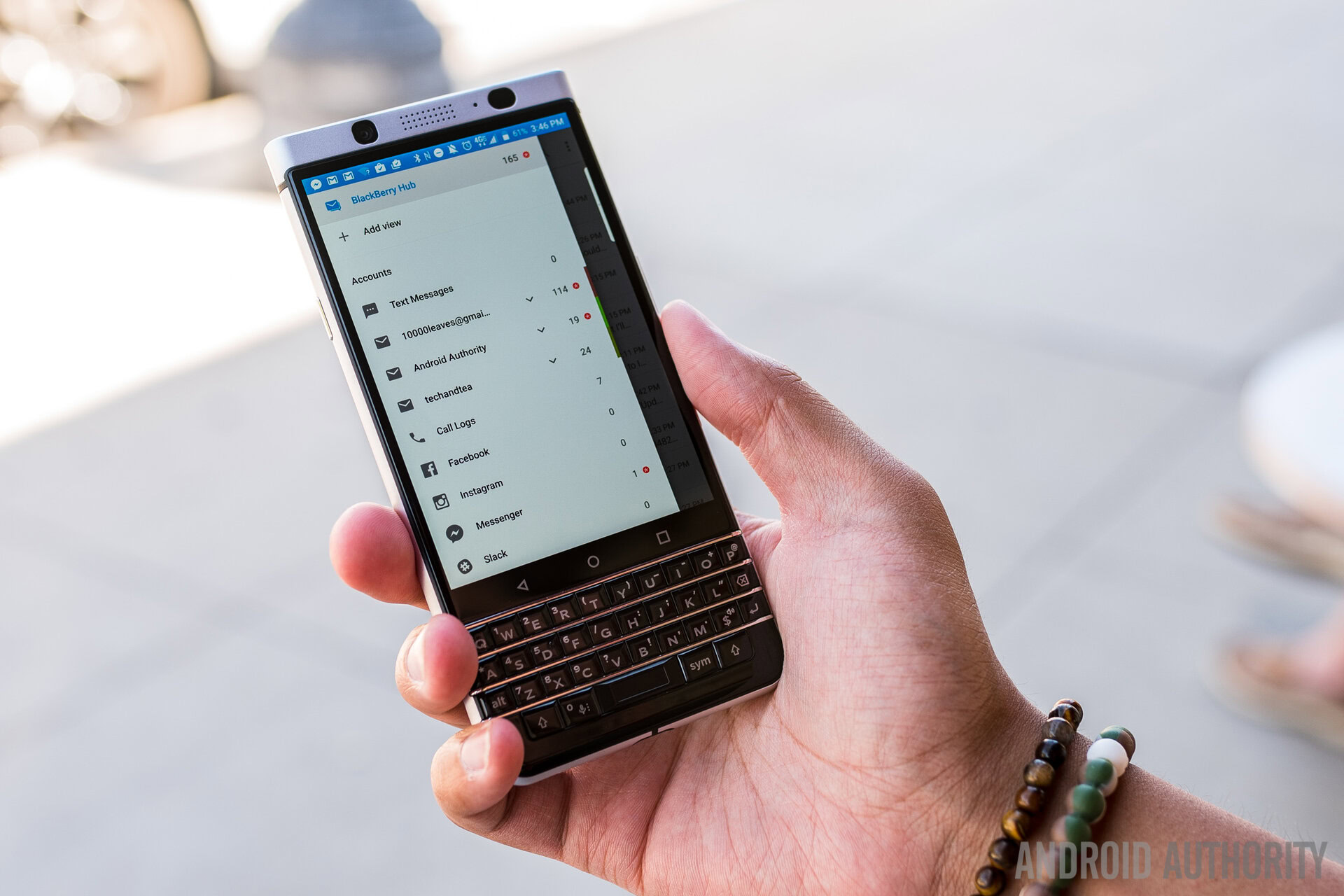
There’s also the classic BlackBerry Hub, which is a catch-all app for all the communication apps installed on your phone (well, most of them). Whether you’re using Gmail, Facebook, Twitter, Instagram, Slack, or pretty much any other messaging app you can think of, the BlackBerry Hub lets you see all of your messages in chronological order. If that’s too overwhelming for you, you can also switch between your list of accounts and filter between them.
What makes it most convenient, at least when setting up the phone for the first time, is the fact that all of your services will be added to the Hub and logged in automatically.
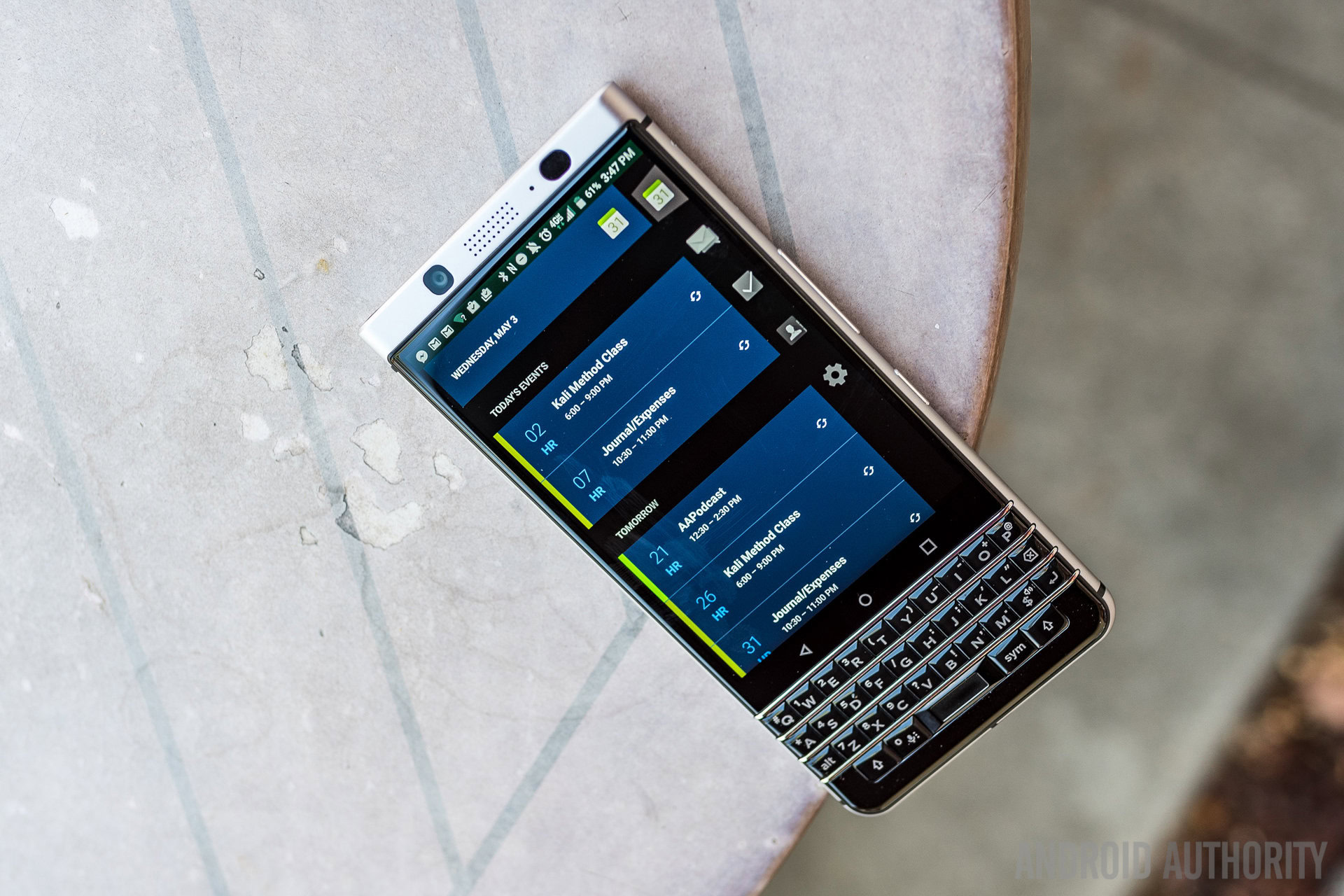
One other popular feature that’s been available on BlackBerry devices for some time is the productivity tab, which you can access by swiping in from the left or right sides of the screen. It works in a similar fashion to the Edge features on Galaxy devices. The productivity tab gives you quick access to your current calendar events, emails, tasks, and your favorite contacts.
Perhaps one of the only software features that are missing from the KEYone is a blue light filter, which has become an increasingly popular feature in Android phones lately.
Overall, we’re really happy with the KEYone’s software. It’s not perfect, but it certainly helps you get things done quickly. And it looks good while doing it, too.
Specifications
| BlackBerry KEYone | |
|---|---|
Display | 4.5-inch IPS LCD display 3:2 aspect ratio 1620 x 1080 resolution 434 ppi Corning Gorilla Glass 4 |
Processor | Octa-core Qualcomm Snapdragon 625 2.0 GHz 64-bit |
GPU | Adreno 506 |
RAM | 3 GB |
Storage | 32 GB microSD expansion up to 2 TB |
Cameras | Rear: 12 MP large pixel camera with f/2.0 aperture, 1.55 µm pixel size, electronic image stabilization, phase detect autofocus, fast focus lock, 4x digital zoom, 4K video recording at 30 fps Front: 8 MP fixed-focus camera with f/2.2 aperture, 1.125 µm pixel size, 84˚ wide-angle lens, image & video stabilization, 1080p HD video recording at 30 fps, light-up LCD flash |
Battery | 3,505 mAh Non-removable Quick Charge 3.0 |
Ports | USB Type-C (USB 3.1) 3.5 mm headphone jack |
Water resistance | No |
Connectivity | Wi-Fi 802.11 b/g/n 2.4 GHz 802.11 a/n 5GHz 802.11 ac 5GHz Bluetooth 4.2 Low Energy and EDR NFC |
Sensors | Accelerometer Magnetometer Gyroscope Proximity Ambient light Hall Effect |
Software | Android 7.1.1 Nougat |
Dimensions and weight | 149.3 x 72.5 x 9.4 mm 180 g |
Gallery
Pricing and final thoughts
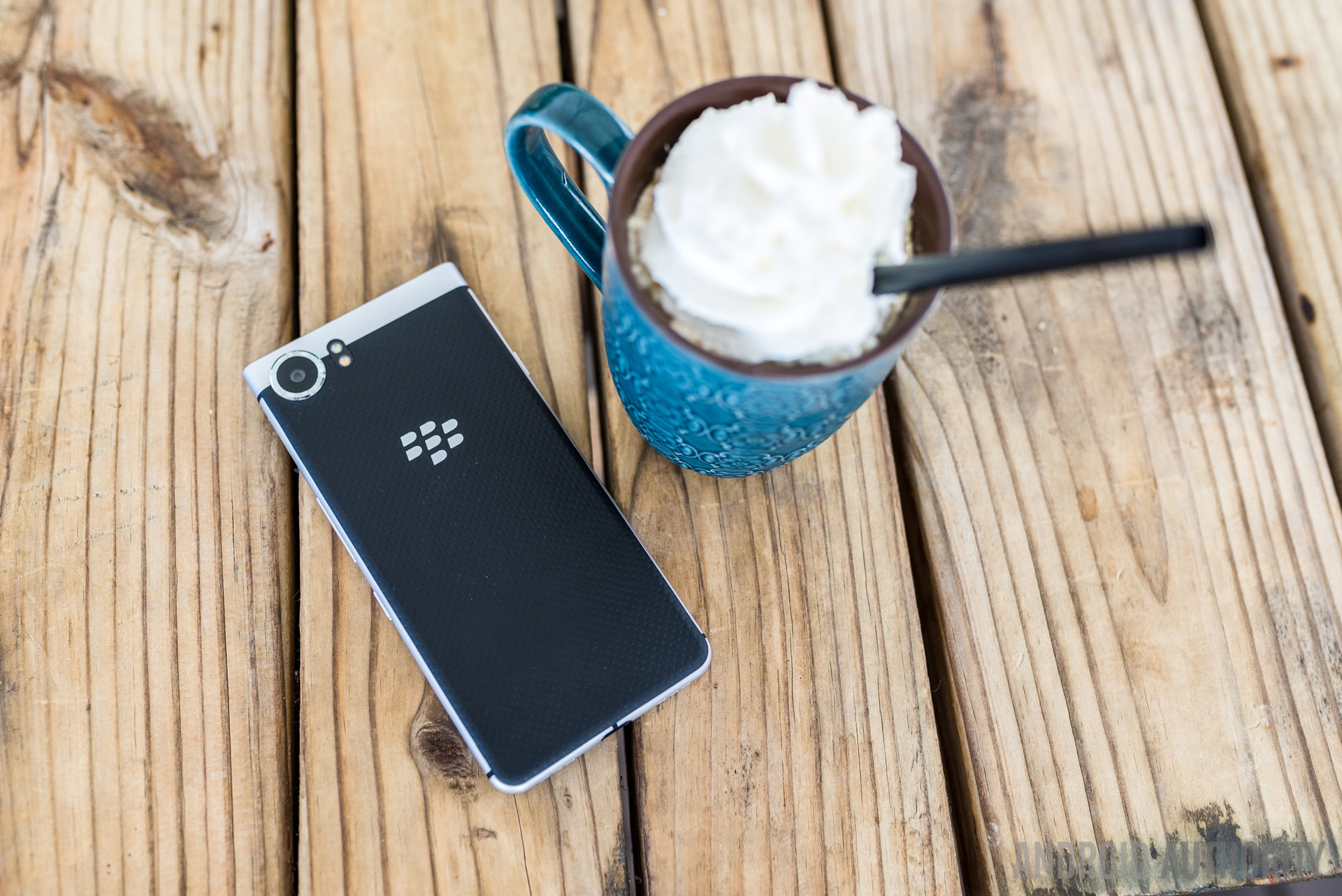
The BlackBerry KEYone is coming to the US on May 31 for the price of $549. It’ll also make its way to additional carriers, including Sprint, later in the summer, though exact availability details have yet to be revealed. Canada availability is also slated for May 31, while the phone is already on sale in the UK (at just one store, though).
This is a smartphone that gets stuff done. It may not be a phone for heavy gamers or media users, but it’s perfect for those constantly in communication with friends and coworkers, or for productivity-focused users who rely on their phones to keep their lives balanced. The addition of a physical keyboard only makes this point even more true, as the endless amount of keyboard shortcuts and ease of use makes multitasking and sending quick messages that much easier.
This is a smartphone for people who like different. BlackBerry really thought out of the box with the KEYone, and in doing so, produced a well-built, productivity-focused smartphone that not only looks different, but isn’t anything like the other phones on the market.
That’s not to say this is a perfect smartphone; performance is lacking in some areas, and the camera could be much better. Still, it’s a completely different experience from what we normally get with Android smartphones, and BlackBerry definitely deserves credit for that.
What are your thoughts on the BlackBerry KEYone? Is this going to be your next Android device? Let us know your thoughts in the comments below!
